women in street art
Street art has always known a rich canvas of diverse voices
known, including an impressive community of women artists. With “Women in Street Art, STRAAT Museum together with ABN AMRO an important initiative that draws attention to these talented artists and their extraordinary contribution to the art scene.
From Lady Aiko to Faith47, from Nina Valkhoff to Lady Pink and Mick La Rock - female street artists have enriched the scene with their unique perspectives and technical mastery. Their work is not only artistically impressive, but also contributes also contributes to important social conversations.
In collaboration with main partner ABN AMRO STRAAT creates a platform that gives these artists the recognition they deserve. This initiative is a celebration of their talent and an investment in the future of street art, where equal opportunities and visibility are central.
Discover the power and creativity of these established names and emerging talents who are enriching the street art scene enrich the street art scene with their vision, craftsmanship and innovative approaches. Their work proves that street art is an art form that thrives thanks to diversity and inclusiveness.

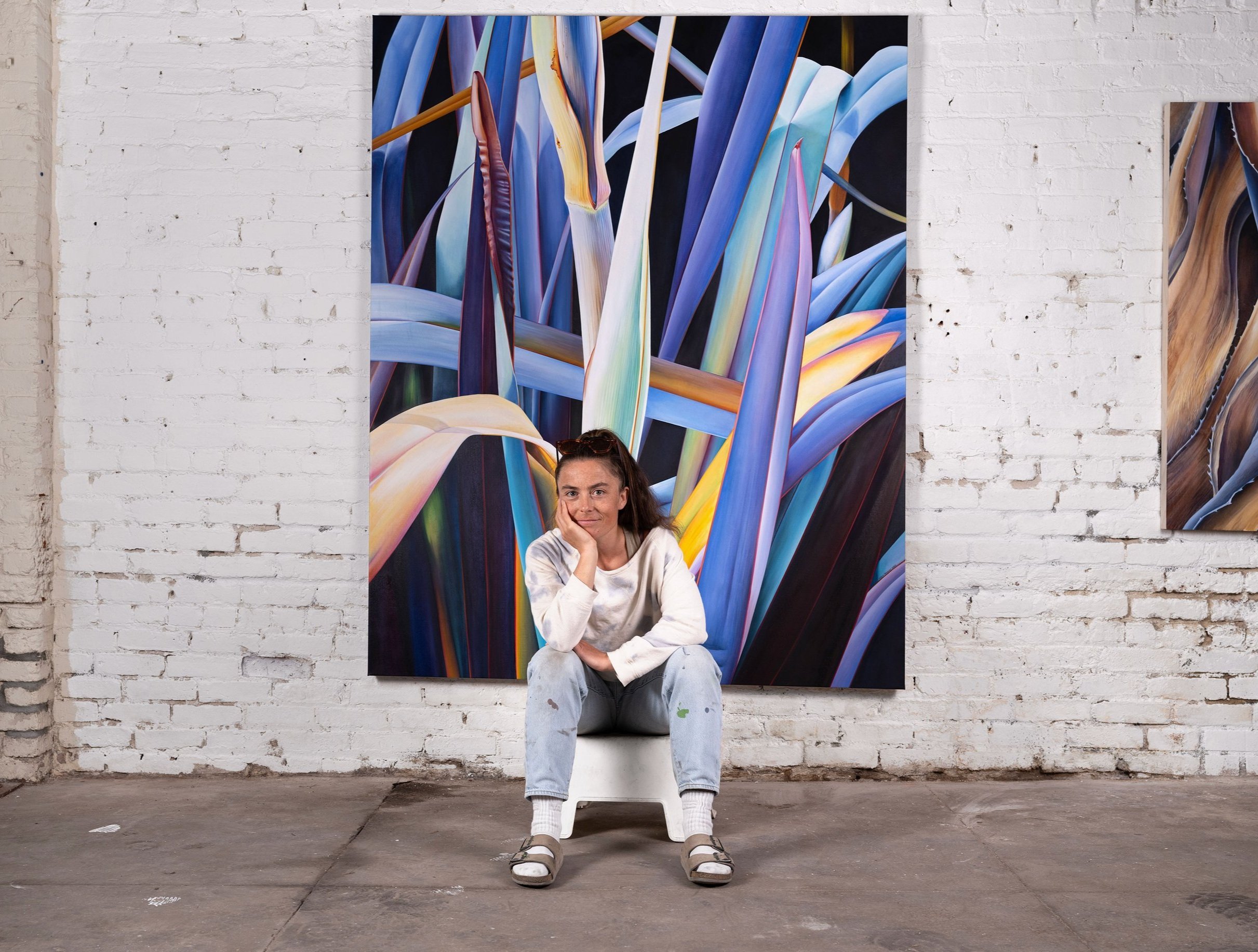
Adele



With Gutter paradise, Adele continues her series of pigeon paintings. She regards these animals as metaphors for people, using them to highlight ordinary stories. This canvas, which was inspired by feathers she found on the floor of our warehouse, is part of a series of pigeon portraits that zoom in on their eyes or necks, resulting in almost abstract patterns.


Alice Pasquini

Alice began painting in the streets in 1999, pioneering Rome’s independent art scene. Taking an intimate approach, Alice tells stories through her personal point of view on the world and on the relationships between human beings. Electra is a tribute to feminine vitality, one of the key themes in Alice’s works.
“What I'm trying to represent is a universe away from the depiction of female clichés. My women interact with the viewer, they are not solely a subject.” / Alice Pasquini


Caratoes




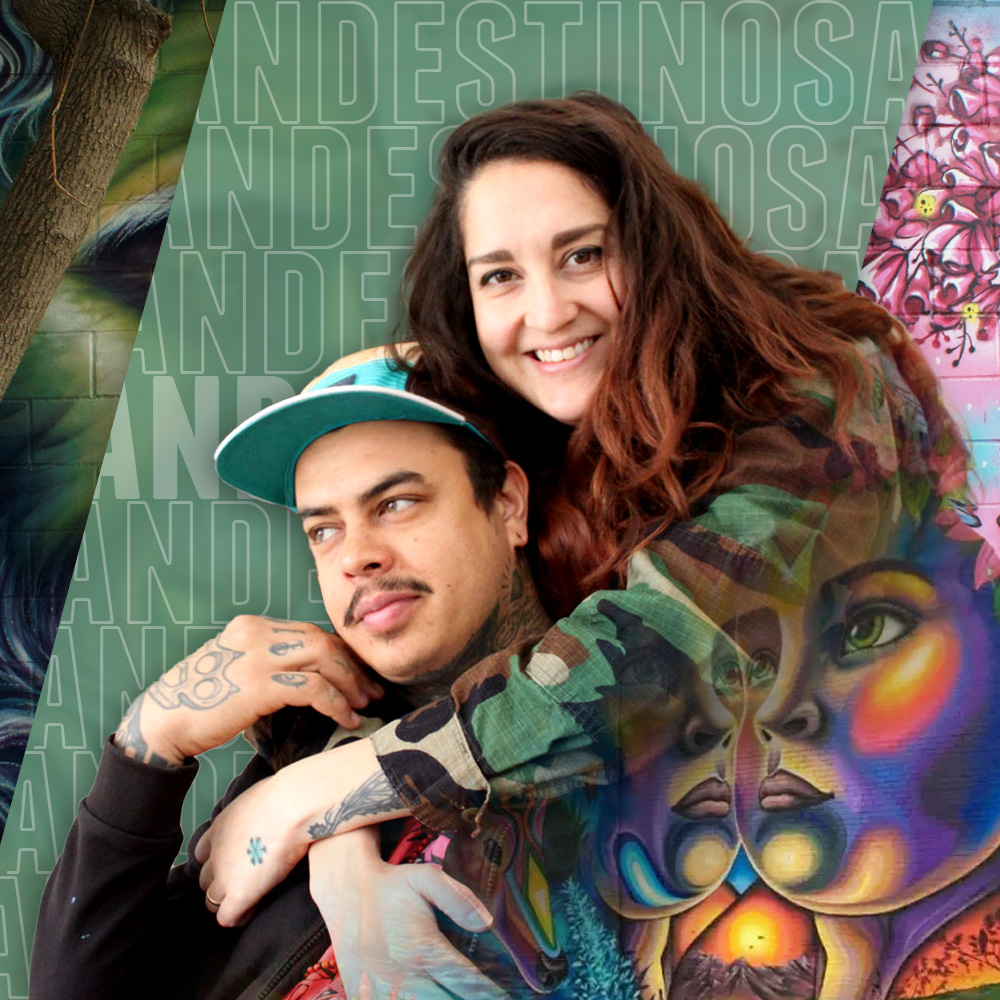
Clandestinos


Clandestinos is een artistiek duo bestaande uit Shalak Attack en Bruno Smoky: partners in zowel de kunsten als het leven. Ze bouwen al vele jaren voort op elkaars creatieve vaardigheden. De felle kleuren van hun muurschilderingen benadrukken thema's die hen na aan het hart liggen, zoals het milieu.
“In de toekomst zullen de wezens, dieren en mensen op aarde zich verenigen om samen als krijgers een einde te maken aan de ongelijkheid en onjuiste behandeling van diersoorten. Dit is het moment dat ze samen hun gebundelde energie en krachten wijden aan het doel om de ketenen die hen al vanaf mensenheugenis gevangen houden, te overstijgen.” / Clandestinos


Danielle SeeWalker


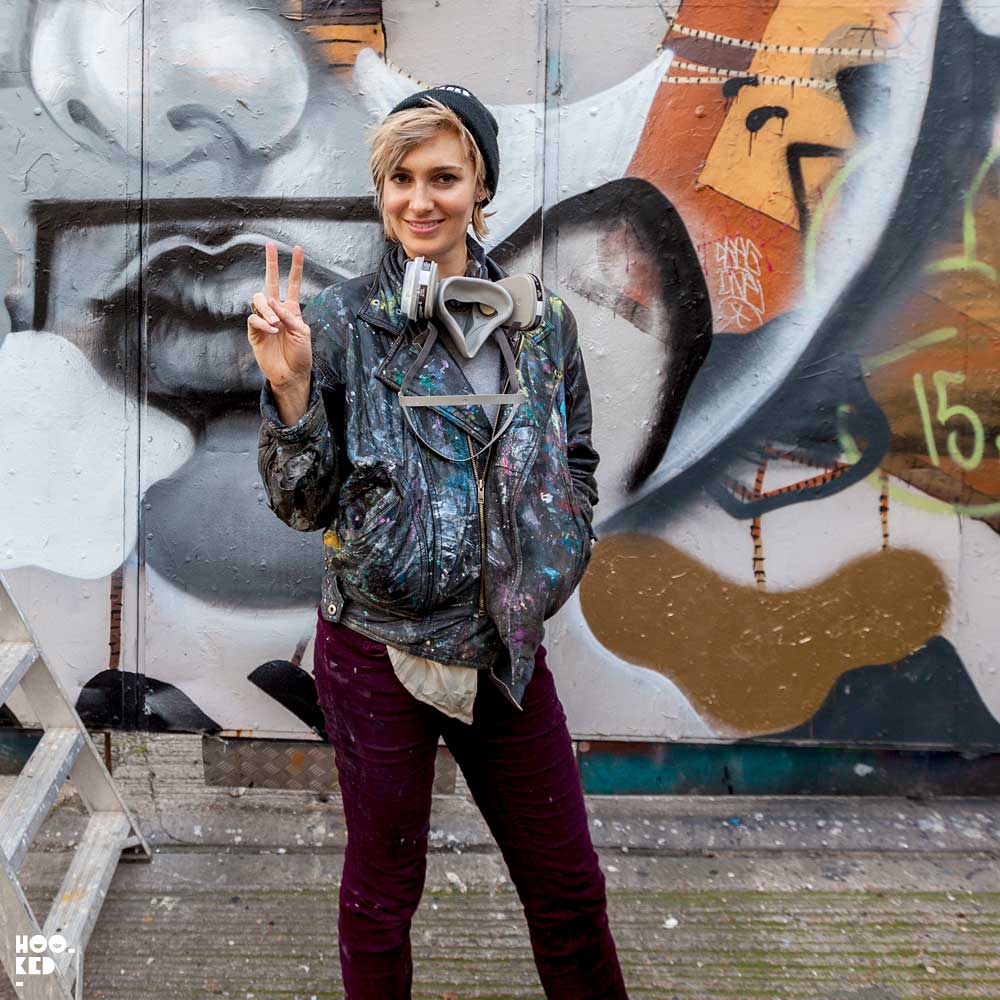
Elle

ELLE - @ellestreetart - dropped out of art school and hit the streets of New York. Due to the ephemeral nature of wheatpaste, she switched to graffiti, which led to a spray paint sponsorship. With unlimited cans at her disposal, she started approaching people to paint their buildings. From there, she started being invited to paint legal murals all world.
While she continues to tour the world painting globally, her visit to STRAAT marked an interesting moment in her career, as she had started gravitating more towards AI, glass blowing and sculpture art. ‘Girl With A Pearl Earring; Contemporary AI Remix’ is actually the first work for which she designed a sketch in collaboration with AI. This came with a few technical hiccups ELLE purposely kept. See for instance the ‘off’ eyelid, the odd flowers, or the ear blending into the hat. She references this very particular moment in time where AI is in a “toddler” stage, making funny/illogical mistakes - which surely won’t last long. ‘Girl With A Pearl Earring; Contemporary AI Remix’ references two moments of Dutch Art History: the Vanitas movement and Vermeer’s Girl With A Pearl Earring”. The painting is done entirely of spray paint in ELLE’s typical collage style, and with more diversity, implying that inclusion is a strong point of Dutch society now.

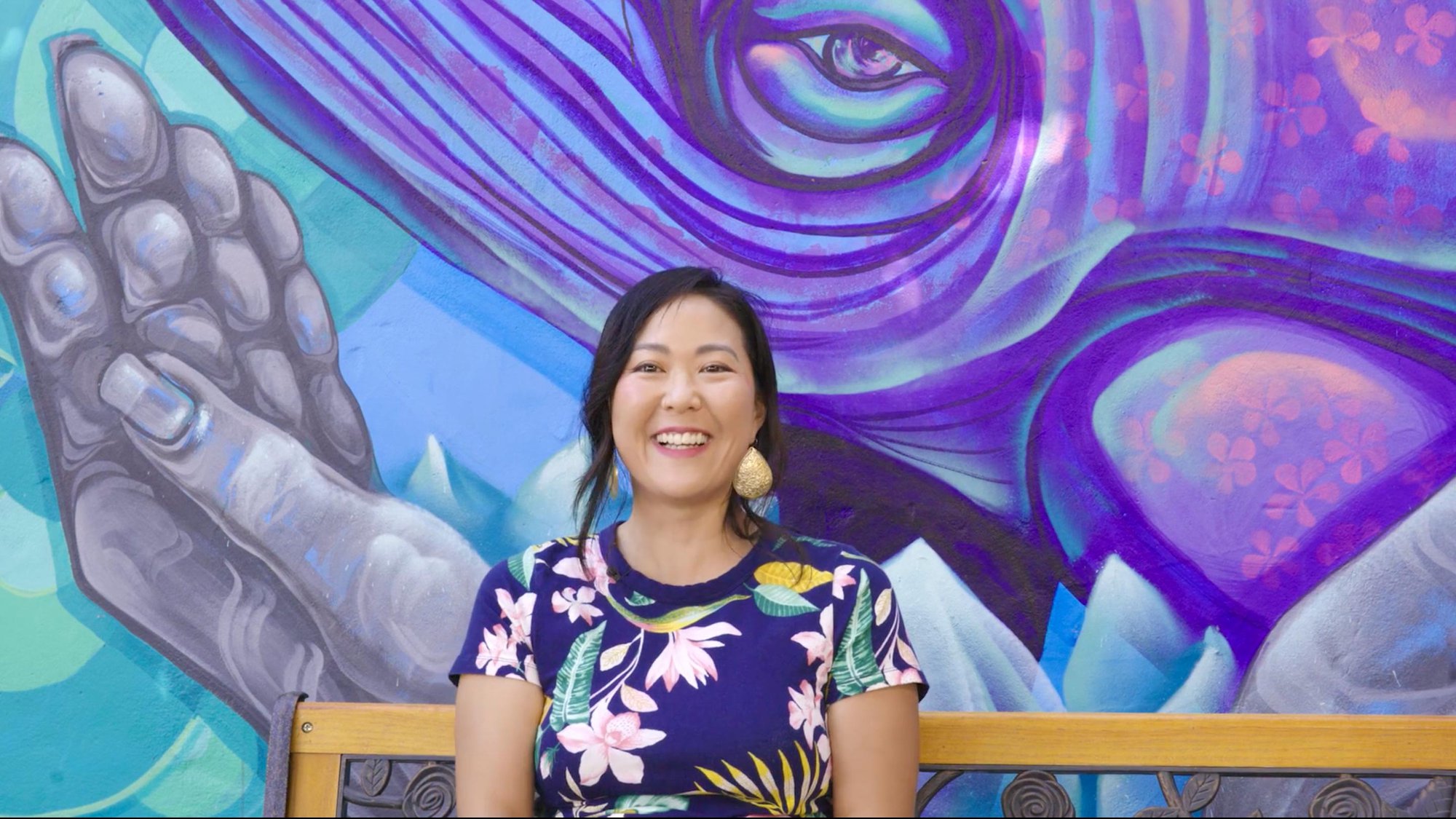
Erin Yoshi

Through abstract color vibrations combined with figurative storytelling, Erin investigates the contradictions in life, such as the fact that we often lose sight of our true essence.
“My work is a reflection of the virtue of inner strength. It cherishes the wisdom that comes with age. As one sheds false self-images, their truth is revealed. I seek to highlight true beauty and raw emotions within humanity, while capturing the breath that connects us all together.” / Erin Yoshi

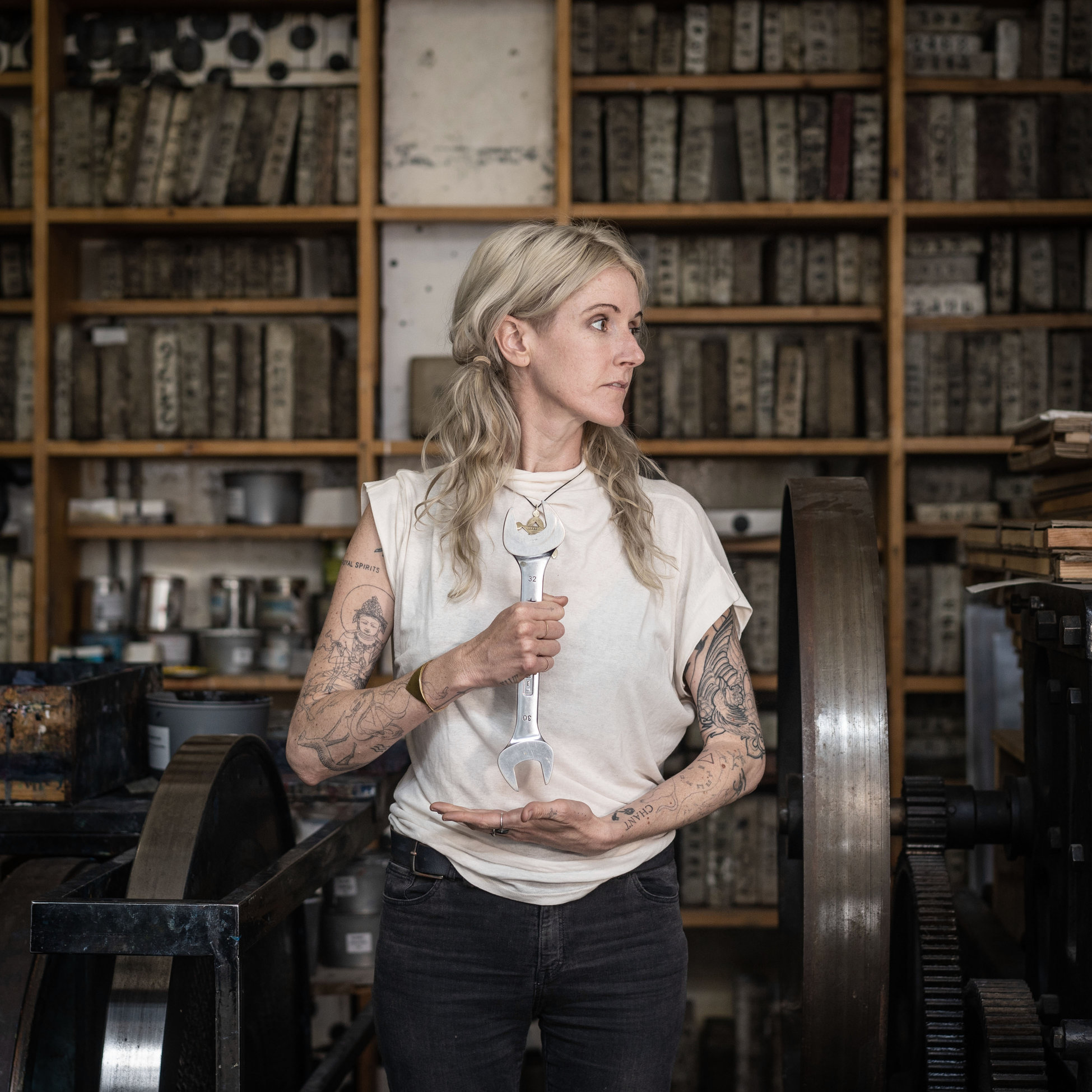
Faith XLVII
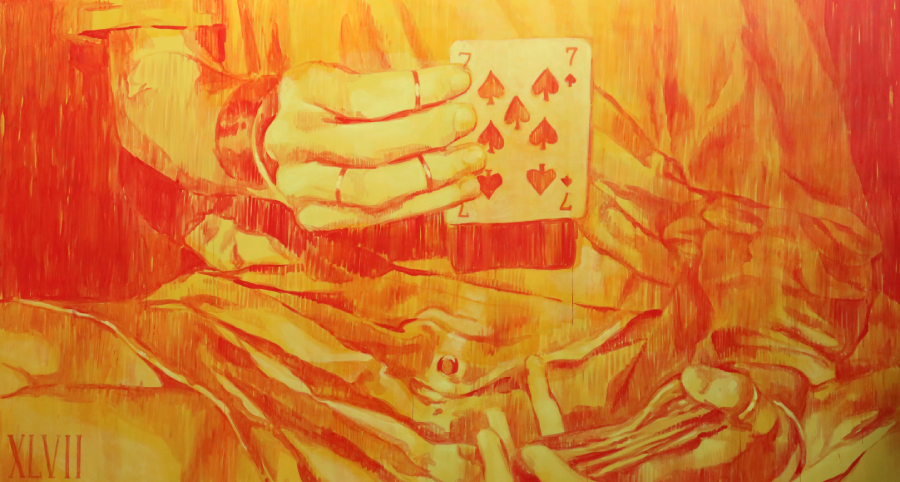
Faith XLVII is a multidisciplinary artist. Beginning her artistic journey in the streets of South Africa in 1997 under the moniker Faith47, she quickly gained international recognition for her evocative graffiti. Over the years, her work has expanded beyond public spaces, from iconic murals to sculpture, video installations, tapestries, and drawings. Her artistic language is an exploration of the spaces where spirit, nature, activism and the ritual intersect, often combined with a sense of reverence for the mysteries that lie beneath the surface.
Her artwork Seven reflects on the relationship of life and chance. Faith points towards the impact of the unknown, and how our daily reality connects to synchronicities that affect our trajectory. This artwork was created as part of the ORIGINS: Family & Legacy exhibition at STRAAT, featuring Faith, her son Keya Tama and his father Tyler B. Murphy.


George Rose


George felt greatly inspired by the idea that STRAAT collects and preserves street art, an art form that - in her eyes - becomes even more precious due to its ephemerality. Nothing lasts forever is her response to this direct contrast.
“I find comfort in the thought that nothing lasts forever, it brings a sense of appreciation to the now.” / George Rose


Georgia Hill
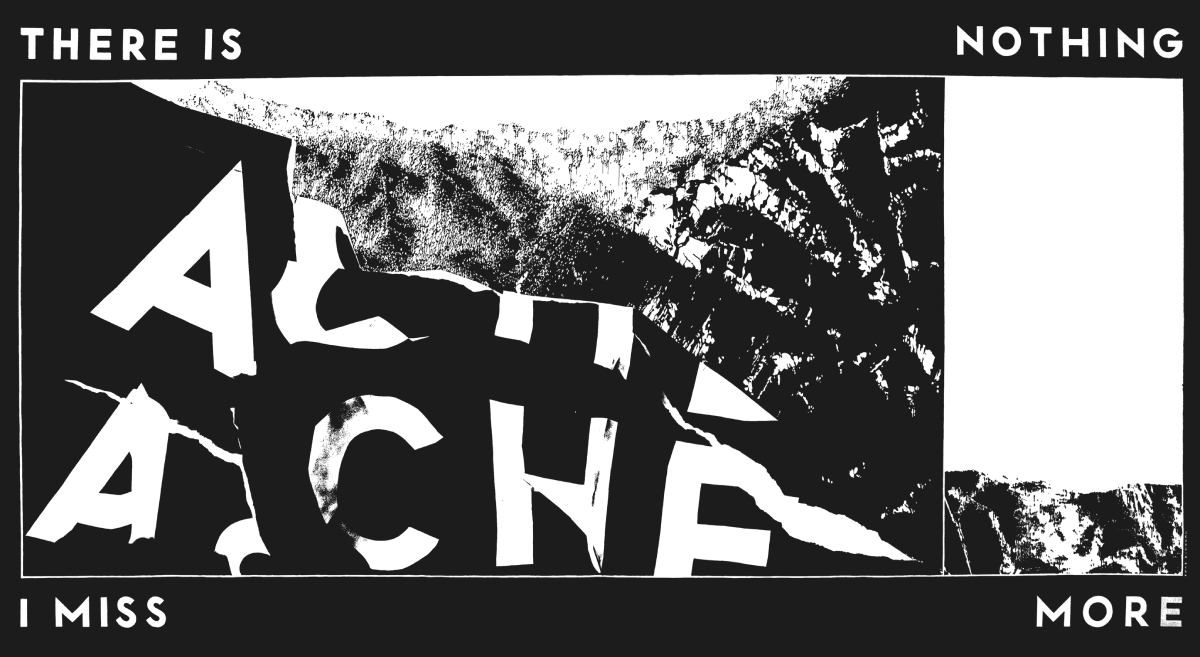
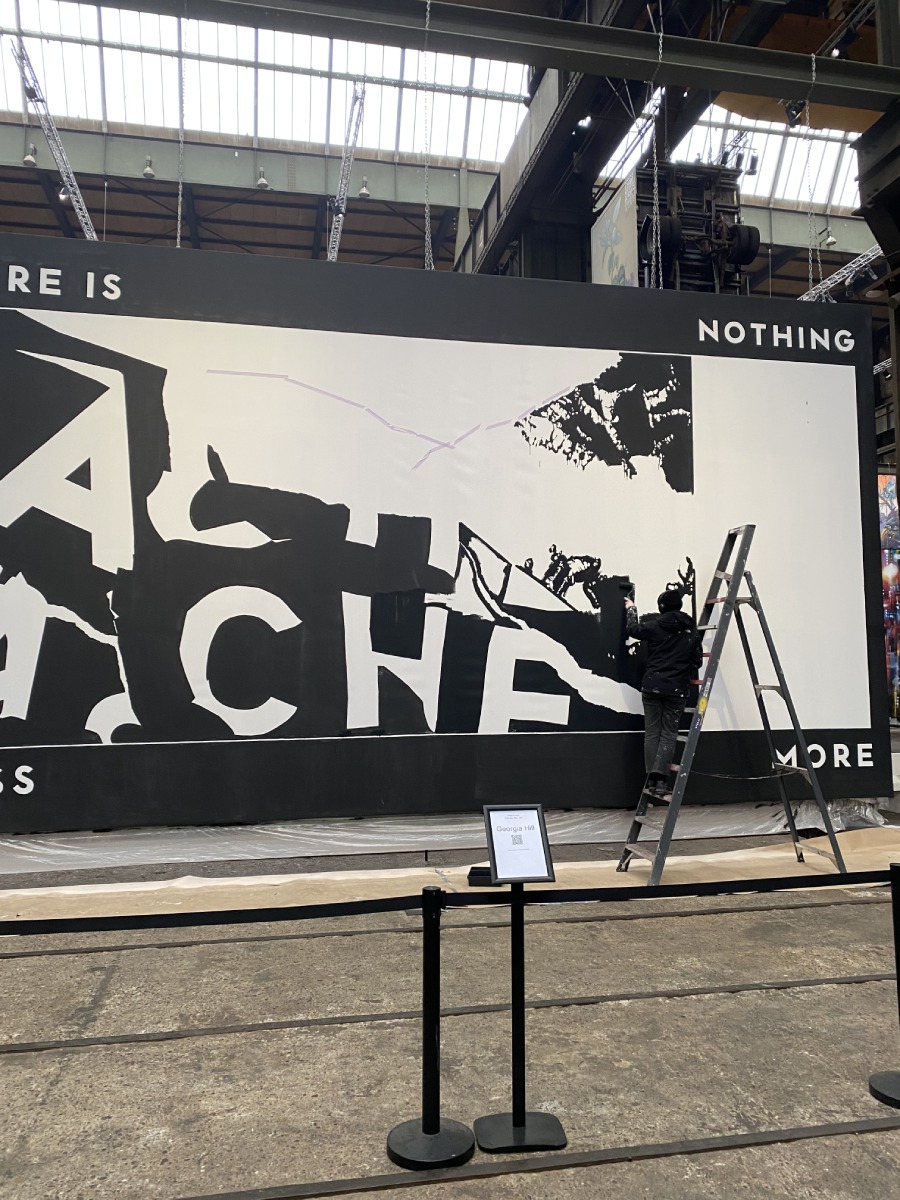
Georgia Hill's graphic artworks merge poetic text with striking monochromatic visuals, where passing moments are held within language, evocative textures, and rhythmic compositions. Each piece responds to its site through the interplay of medium, scale, and dialogue, expressing moments of vulnerability, clarity, or overwhelm.
“I see landscapes as both physical and psychological, where we move through spaces and experiences while carrying our own experiences that overlap and collide. This artwork speaks to realisation and loss–there is the challenge of letting go, often a fondness in looking back, and the undeniable truth that change is constant. Lately, I’ve been exploring abstract landscapes, drawing from my own photographic references to construct new, staggering scenes. This work evokes an avalanche of detail and intensity, before we can arrive at a sense of clarity or calm.” / Georgia Hill

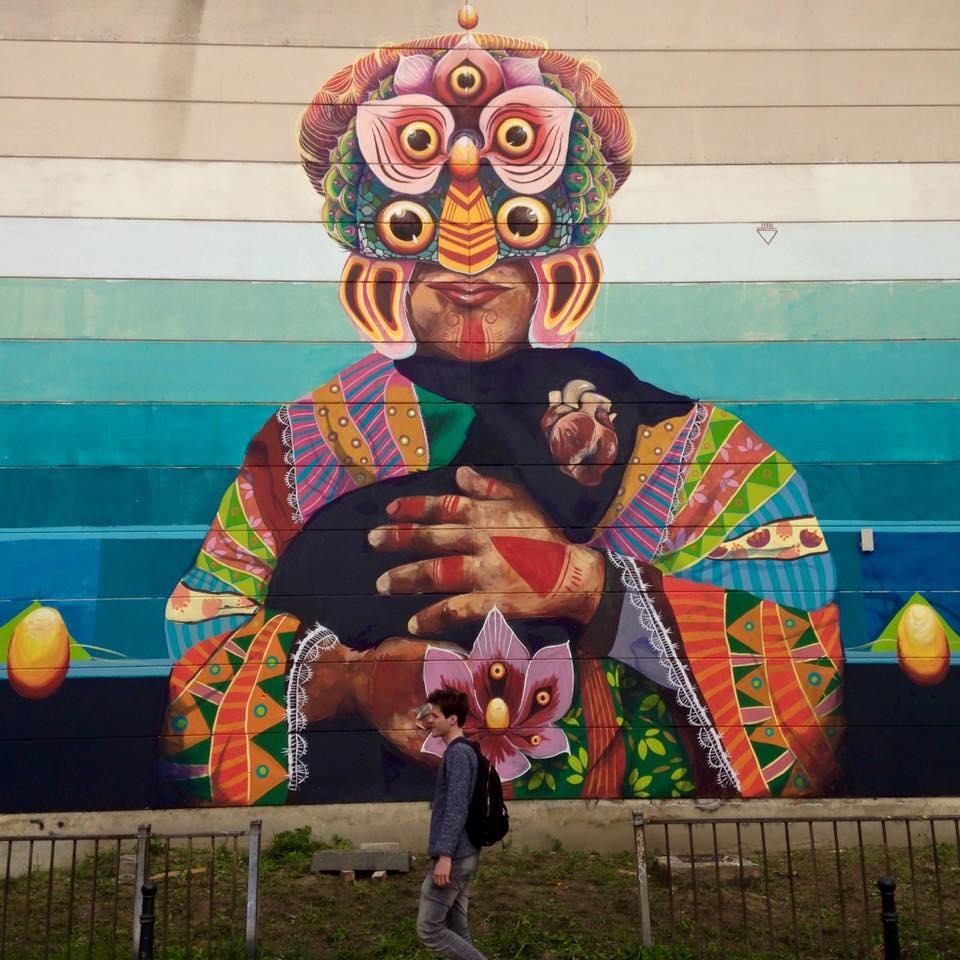
Gleo
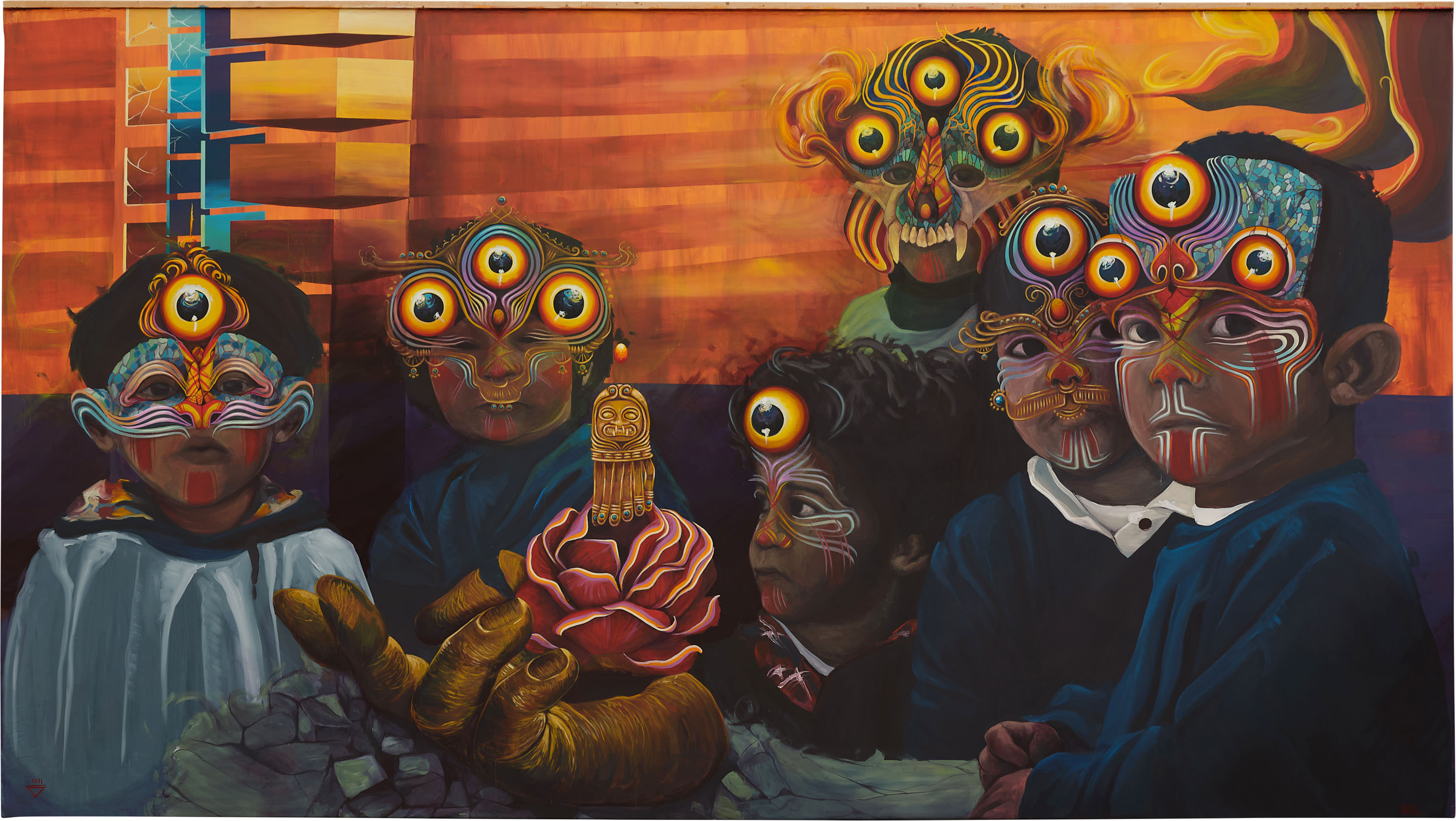

Through an aesthetics of tattoos, masks and trance-like eyes, Gleo explores the notion of life cycle in Latin America.
“The hand builds, destroys, sows, creates, curses and blesses. This piece revolves around seven characters that symbolize fire, the element that overcomes darkness and cold, which represents change, purification, and sacrifice. It talks about dream beings guarding ancestral wisdom, reminding us that the divine has infinite forms.” / Gleo

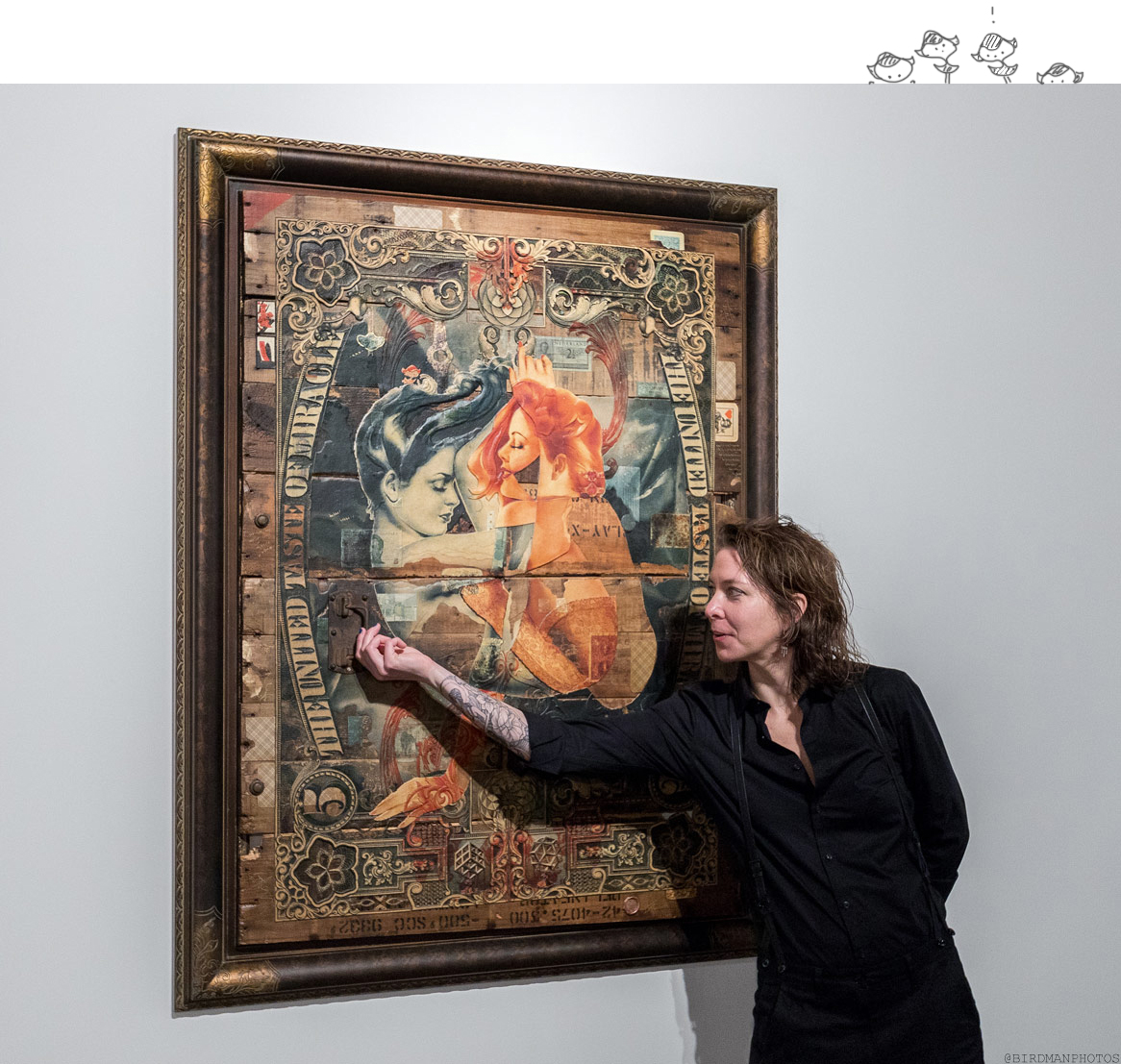
Handiedan
Handiedan’s art involves a complex cut-and-paste mixture of digital and highly detailed sculptural hand-cut collages, complimented with augmented reality and collected antique ornamental frames. Handiedan’s accomplished and refined mixed-media techniques facilitate an artistic journey through past, present and future. The result is an almost kaleidoscopical visual exploration whose discoveries are sometimes immediately visible, and sometimes hidden in plain sight.
The artwork Goddess in Us has a female lead, as is almost always the case in Handiedan’s work, but it encourages each and everyone to tap into their female energies. The warm, powerful Veridian hues and the symmetrical composition draw you into the artwork. Its main message is that everything is energy, something the spiritual side and the world of science ultimately agree on. It’s also full of personal details for the artist, including the hand-drawn character Amélie, who is indeed inspired by the movie, but also represents Handiedan the human being.

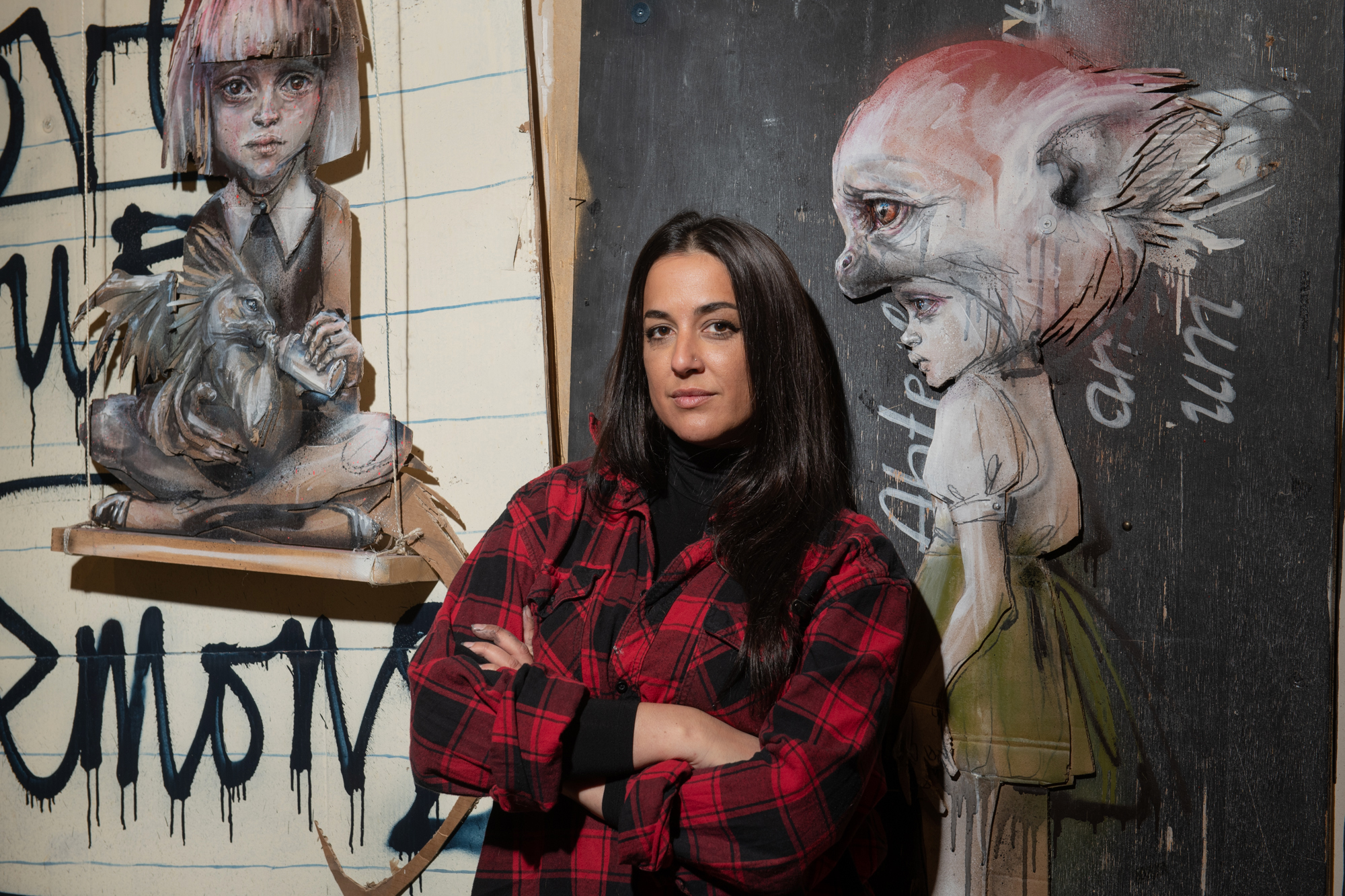
Hera

In Weak becomes hero, thoughts are represented by deer. You can see the thoughts/deer transitioning from rough sketch to more detailed to finished. The crowned deer symbolizes the thought leaving in the end. The choice for deer is a conscious one, as HERA sees a lot of similarities between thoughts and deer, in particular their fragility.
HERA of Herakut is a German artist with roots in the graffiti and street art genre since 2001. Aside from painting, HERA creates installations, does costume and set design for dance companies, and works as a curator with a focus on supporting her female colleagues. Whenever possible, she collaborates with humanitarian aid organizations on art programs for children and underprivileged youth.


Hola Lou


Hola Lou (born Luisa Salas) is Mexican artist, graphic designer and muralist. Always curious about contrasts and bold simplicity, Lou bases her artworks on the act of balancing abstracted memories, feelings, and music. All of them influenced by a minimal and modern approach to the diversity of her Latino roots.
“I have been a professional artist for the past nine years. When I started, it was all about self expression, freedom and finding myself. Throughout the years, there have been some interesting twists and turns. It’s easy to forget where and how things started, leaving behind a regular job et cetera… It has been a long journey, but in a sense I am back at the beginning; I am in the right space to take a break and find new ways of evolving who I am and where I am going.” / Hola Lou


Irene Lopez


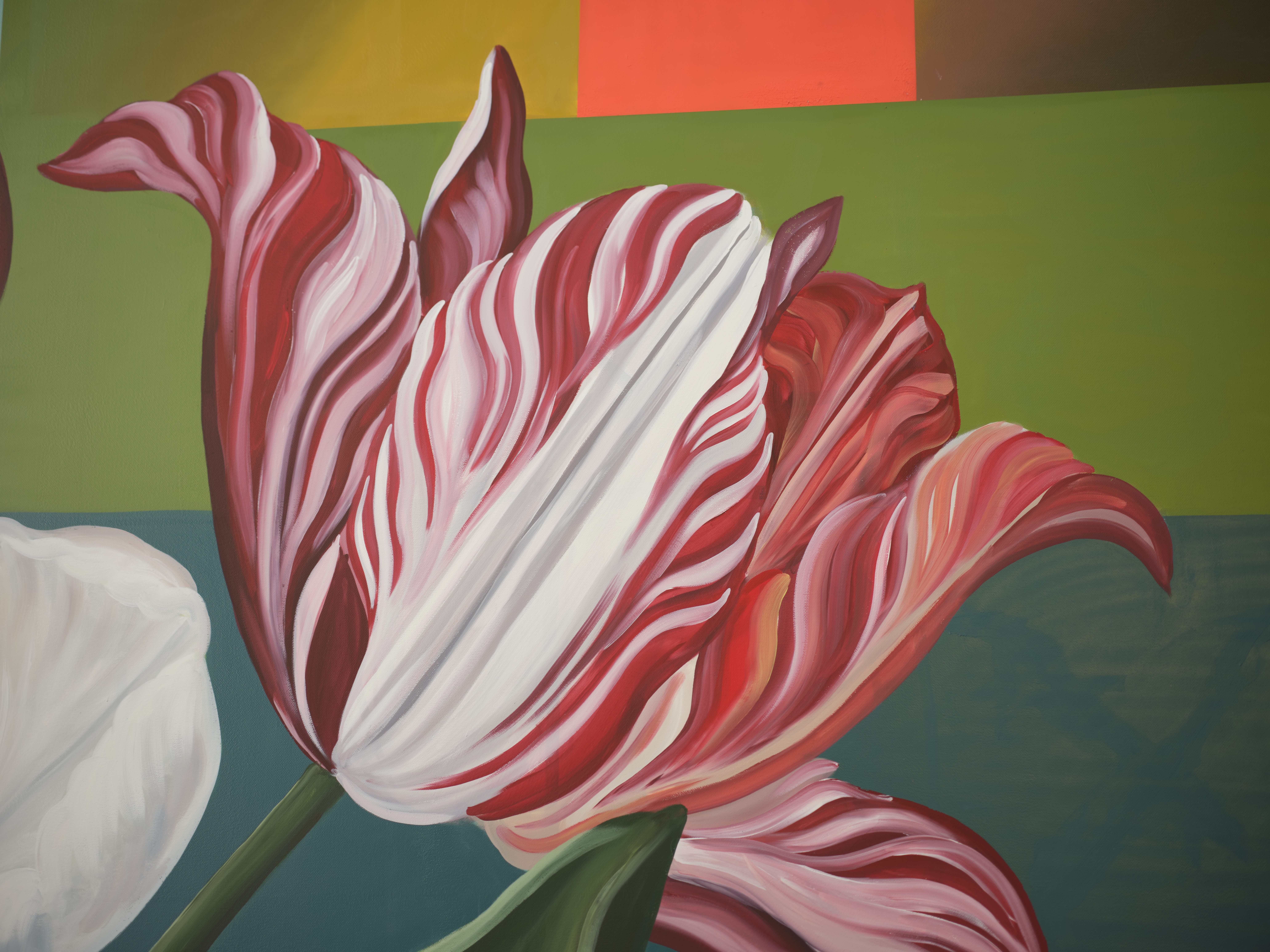
Irene Lopez Leon is known for her works that blend figurative and abstract elements in a vibrant play of color. Her paintings aim to reinvent classical elements through a contemporary perspective, merging tradition with modernity. Starting with street art, she ventured into mural art, exploring various themes such as nature, landscapes, and contemporary scenes. Her gallery work is currently taking the contemporary art world by storm.
“My painting pays tribute to Rachel Ruysch, a celebrated painter of the 17th century, renowned for her precision in still lifes. Defying the conventions of her time, she introduced a naturalistic perspective brimming with life and detail. Her ability to capture the ephemeral beauty of nature made her a prominent figure in the genre of still life, leaving a lasting legacy in art history. Through my painting, I aim to honor her legacy through the tulip flower, drawing inspiration from her style to pay tribute to her significant contribution to the art world.” / Irene Lopez

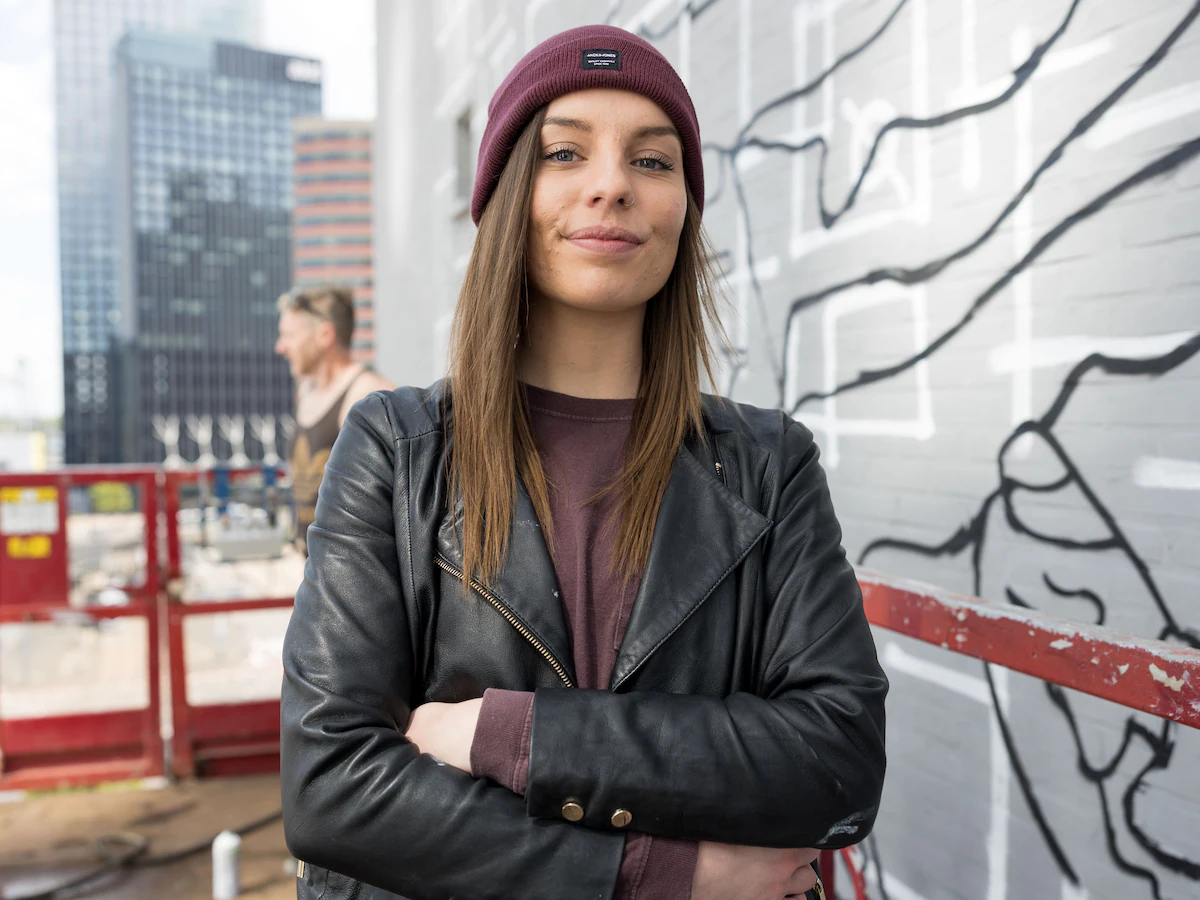
Judith de Leeuw

Inspired by International Women’s Day, Judith created a work based on the story of an anonymous woman, who after years of abuse eventually rebuilt her destroyed self-image. By now, she has managed to evolve into a happy, successful woman. She has fought for her own peace of mind, and she now dedicates her life to creating universal equality.
With this work, Judith de Leeuw wants to reflect on the current and future image of women. She is internationally known for her giant murals addressing current social themes. JDL’s work is inspired by personal stories of admirable, vulnerable people. She aims to create a universal understanding for one another within our society.


Kayla Mahaffay

Nectar visualizes the preciousness of life itself and how it should be cherished. The girl wears a somber face as she holds a droplet of nectar, the divine drink of immortality. This directly contrasts the butterflies and flowers nestled chaotically on her torso, representing fragility, innocence, and mortality.
Born and raised on Chicago’s South Side, Kayla Mahaffey grew up learning to appreciate the charm and soul of her city. The world around her showed her how beauty still coexists with the grittiness of our society. Occasionally, taking inspiration from media and cartoons, her colorful paintings contain hints of whimsy and realism that tell a story of life’s journey, nostalgia, and communal topics that sometimes go unheard.


Lady Aiko


“My signature bunny was born in 2005. I myself was born in the year of the rabbit and instantly came up with the idea of the bunny with a spray can. The rabbit is also a symbol for long life, success, friendship, freedom and more. With lots of great meaning for Asians, I wanted to create something to make people and myself cheer up and get excited. Ever since my first bunny, I have been traveling continuously and painting numerous bunnies all over the world to spread positive, creative energy. I am very grateful to be able to visit Amsterdam and paint one of the biggest bunnies in the world at STRAAT. I hope this bunny makes everyone smile here.” / AIKO

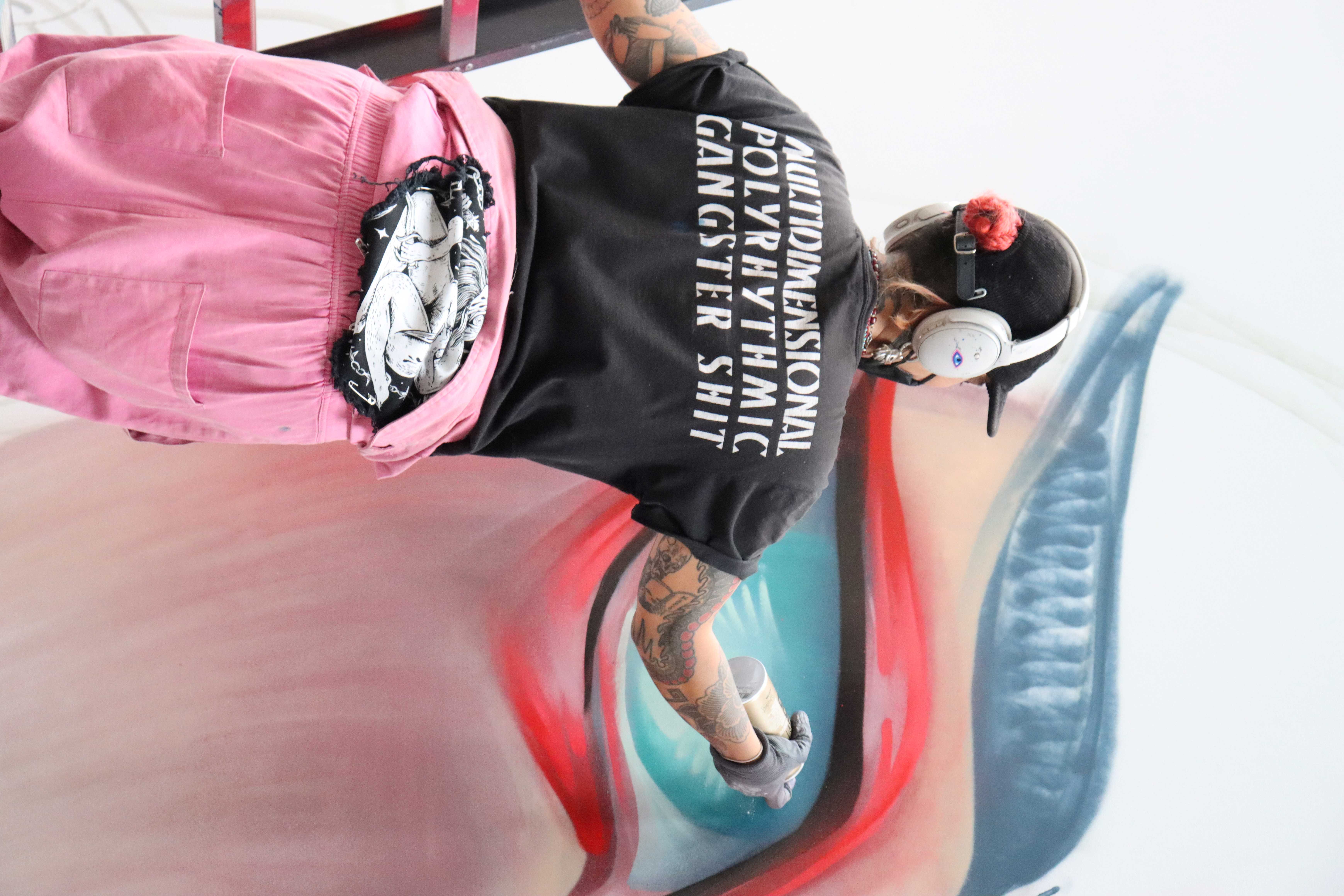
Lauren YS (Squid Licker)
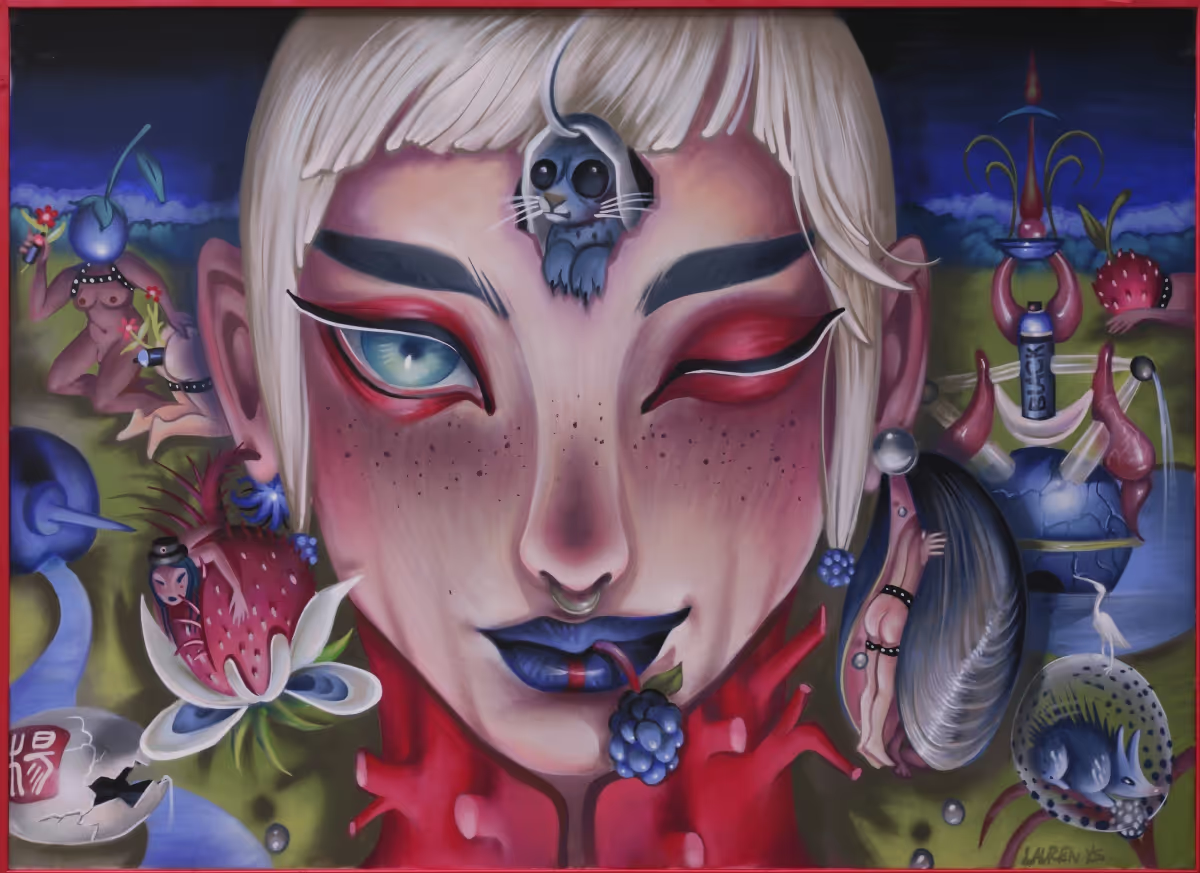




“In homage to the early Dutch master Hieronymus Bosch, whose famous triptych The Garden of Earthly Delights envisions a bizarre, ecstatic landscape in which characters explore euphemisms of sexual exploration and freedom before The Fall of Man–basically, the dopest gay cruising painting ever made. I have long been inspired by Bosch’s work, and spent two days drawing in front of the original painting in the Prado when I was younger. In my work, I explore themes of gender fluidity, selfhood, queerness, and freedom, so Bosch continues to inspire me. Critics argue whether Bosch’s painting was an allegory of spiritual transition or a playground of corruption – I prefer to see it as a vision of sexual freedom many centuries ahead of its time, and so my piece Meet Me In the Garden is a reclamation of Bosch’s freaky world, as well as an affirmation for gender fluidity and queerness.” / Lauren YS

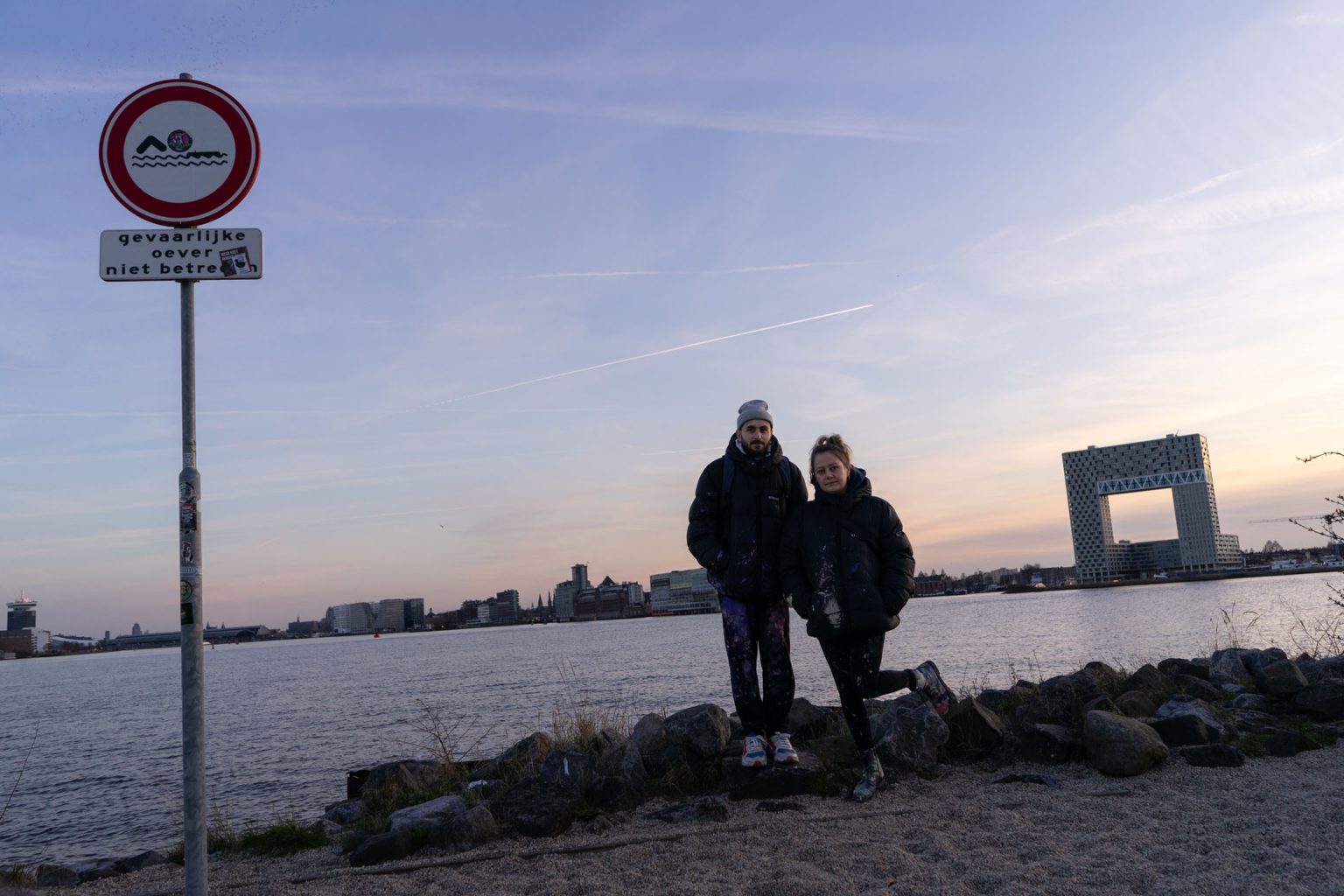
MOTS

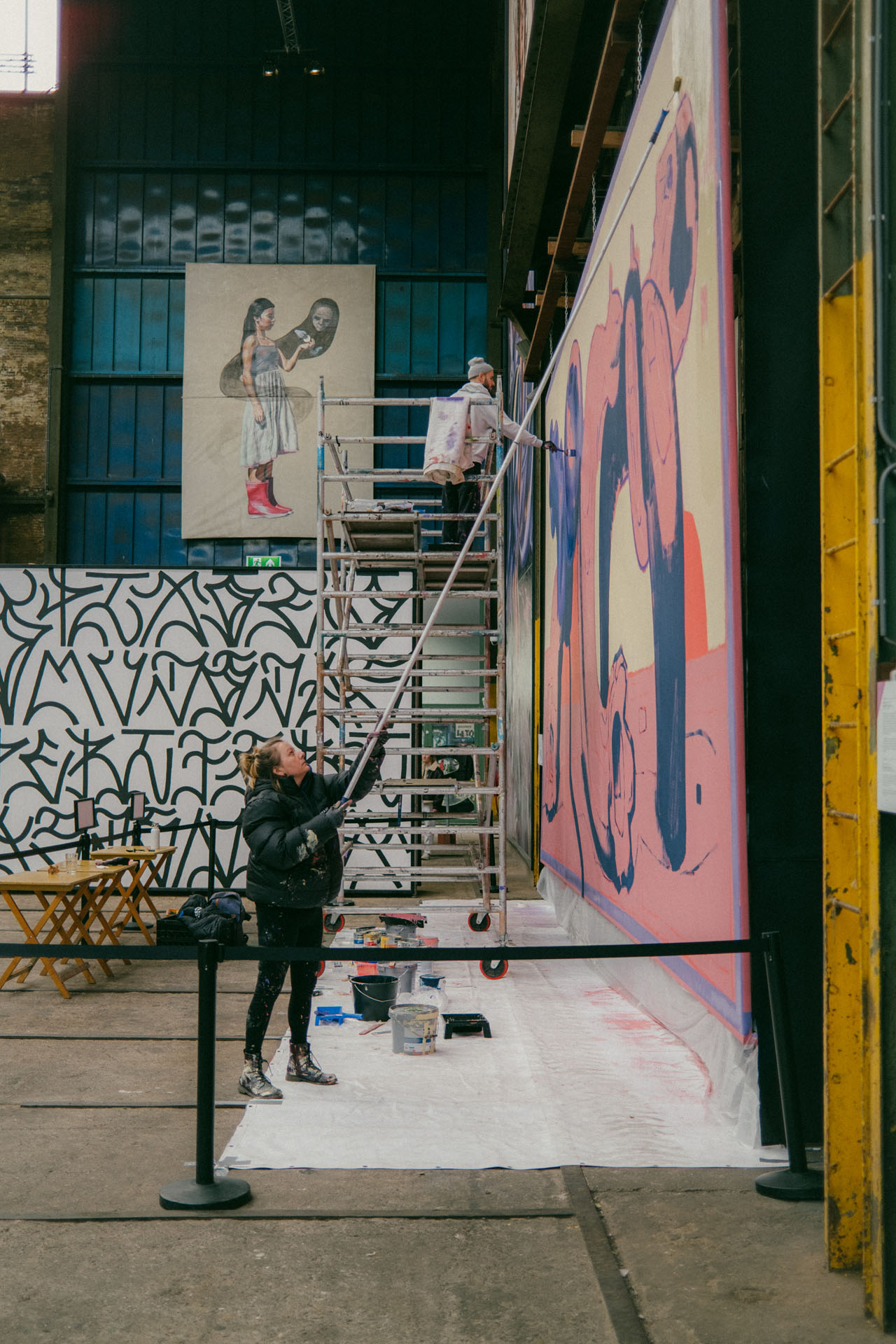
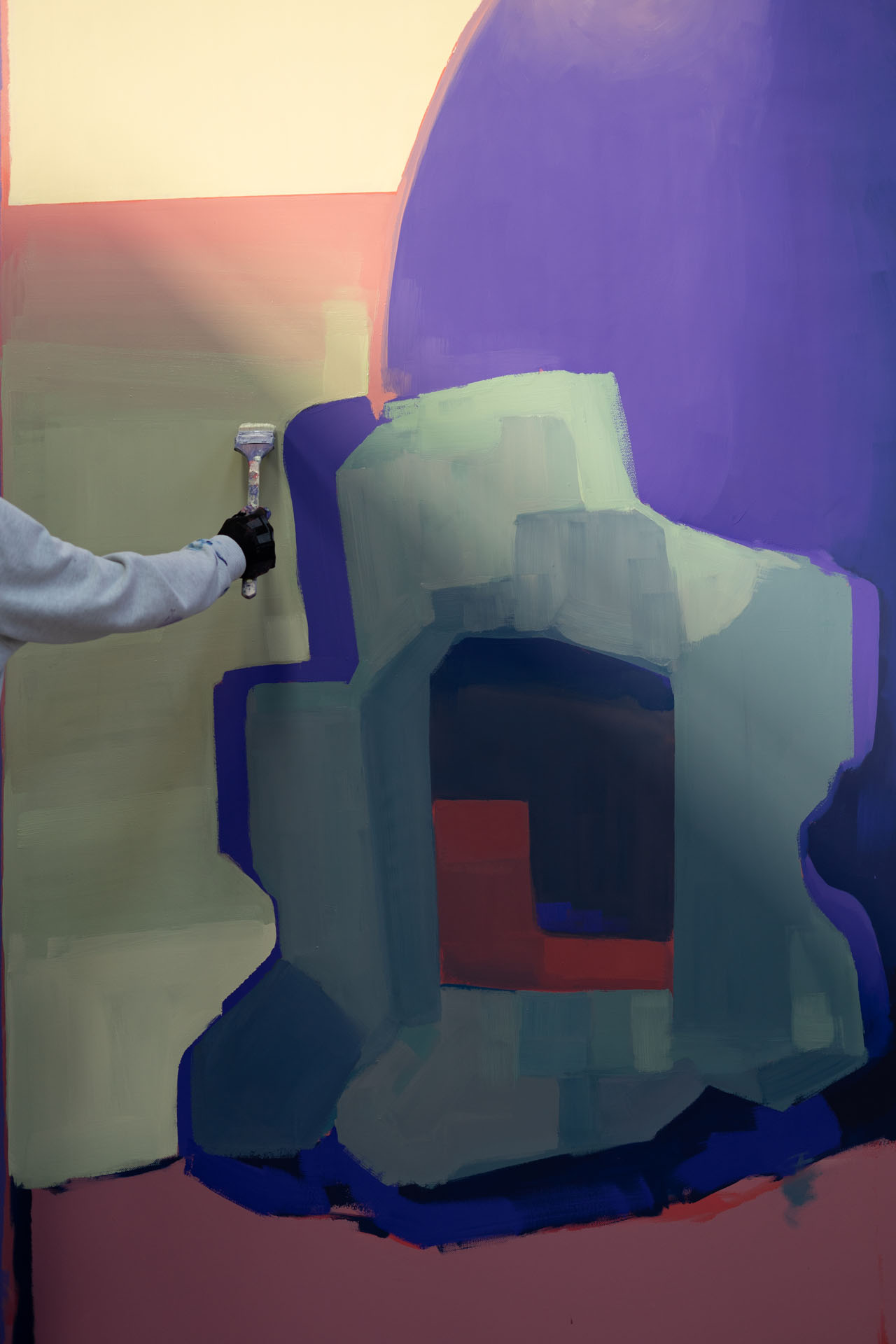
MOTS is a duo of visual artists created by Diogo Ruas, a painter and illustrator, and Jagoda Cierniak, a photographer and project coordinator. Their collaboration merges their individual approaches, characterized by Diogo’s experience as an urban artist and Jagoda’s involvement in social grassroots initiatives and art projects. The couple's fascination with abstract and realistic margins is clearly evident in their works, which include canvases, large-scale murals, and interdisciplinary projects.
“Drop is a window to the bizarre; it doesn't present a fixed narration but leaves space for the viewer's imagination. Inspired by classical still life compositions, the shapes and forms presented in this painting result from different feelings and thoughts that occurred in the moment of creating this piece.” / MOTS

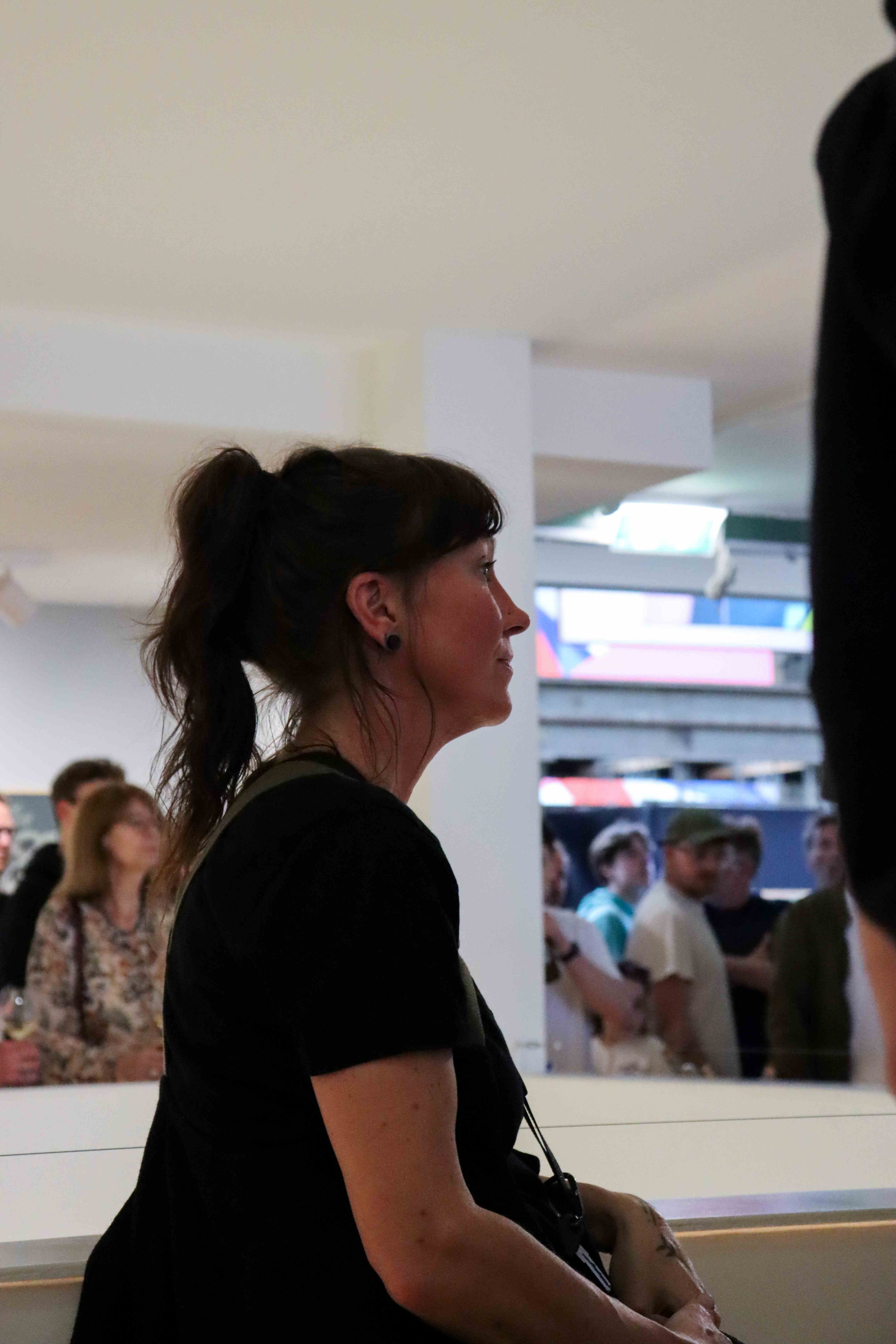
Mando Marie

Mando’s works always portray a girl on the edge of innocence that relates to the childlike quality in us all. In Going on, she continues this exploration, adding a sense of nostalgia through the use of antique colors. Her character is stenciled and repeated several times, implying movement.


Michelle Hoogveld

Michelle Hoogveld is a Canadian contemporary artist whose vibrant style is inspired by color theory, connection, and matters of the heart. Michelle creates compositions of bold patterns and textile-like blockings of color, with layers that weave and fold together as an intricate tapestry symbolic of who we are as people.
"Immersed in a landscape of geometric shapes, Resonance explores the emotional resonance we have to color and the ability to evoke feelings of happiness, joy and genuine connection. Layers overlap and come together in an expressive gradient of abstraction and form, uniting who we are within our surroundings and one’s beautiful capacity to love." / Michelle Hoogveld


Mick La Rock

Sunrise at the Shinano River is a semi-abstract artwork by Dutch graffiti legend Mick La Rock. In her more contemporary style, she turns to architecture to shape the letters of her graffiti name (Mickey). The building featured in this piece is painted after a photo of a Brutalist gymnasium in Japan. Brutalist architecture was a strong influence on Mick’s work during this period of transition from style writing graffiti to art; in its monolithic shape and rigid lines she can “find her letters”.
“During the development of abstracting my graffiti letters over the years, I recognised similarities between the lines found in Brutalist architecture and the shape of my letters. The letters of my graffiti name can still be read, if one looks for it. Now the content of my work is the abstraction of letters, and then abstracting this concept into something that is almost figurative, like a building. I don’t create my own buildings, I reproduce something that was already built. This is a link to graffiti, because graffiti is also built on something that was already there before.” / Mick La Rock

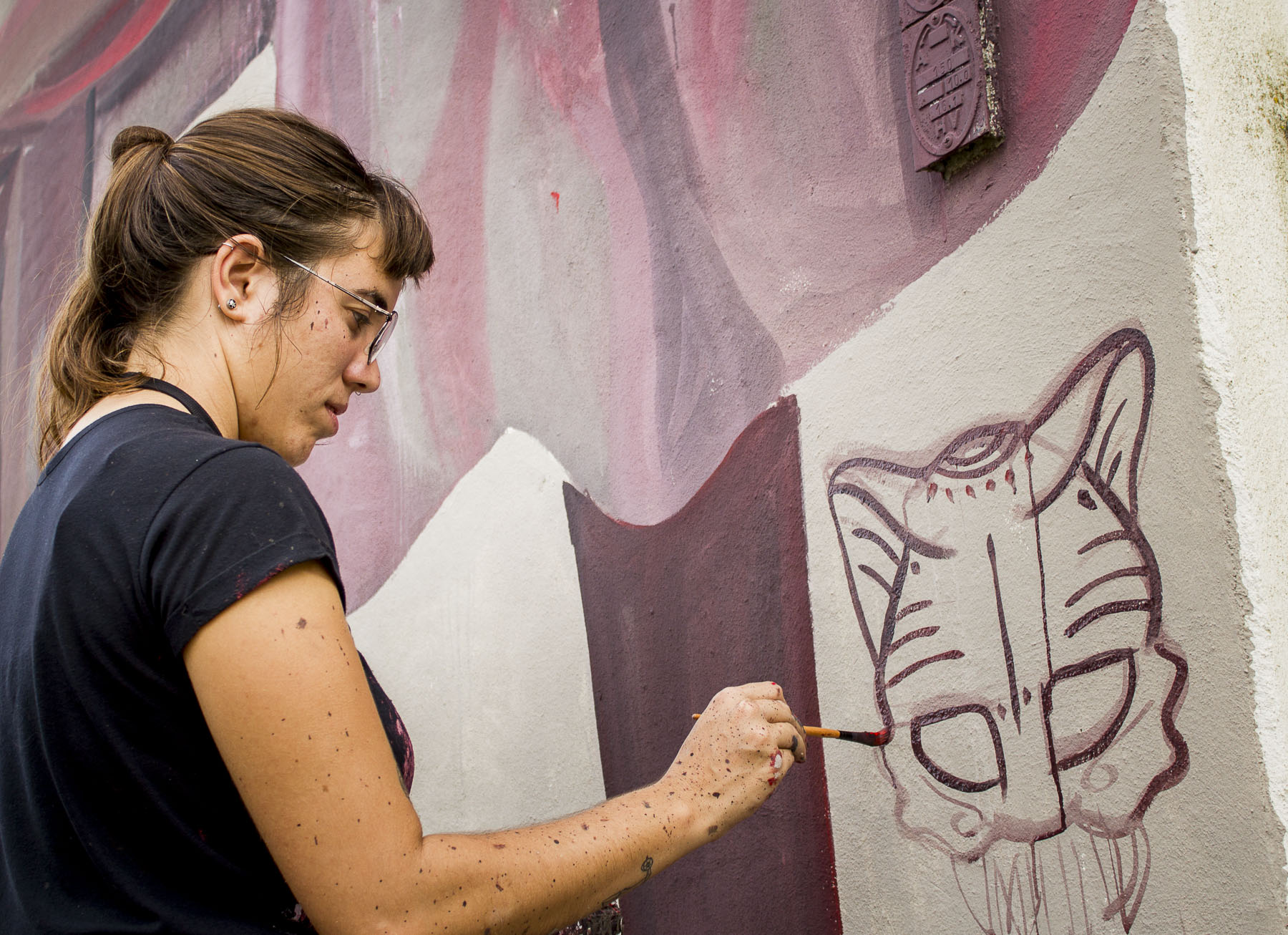
Milu Correch

Milu Correch’s career in the art world began in the more traditional sense, and she quickly learnt the skill of transferring her smaller-scale images onto large walls. This journey has been a learning process, and Milu continues to experiment with different brush strokes on a larger scale. Since painting her first mural in 2011, she has spread all over the world, both in her art and efforts towards spreading awareness of female artists. For each work of art, her Argentinian roots are of the highest importance, with a focus on the specific proverbs around witches, depicted as ‘protagonists with the active power of changing reality through their spells.’ Leaving the meaning of the imagery in the hands of the viewer creates a freedom for Milu. In her piece for STRAAT, she repeats a familiar subject of a mythical and anthropomorphic figure, with a narrative from Latin iconography.


Miss Printed
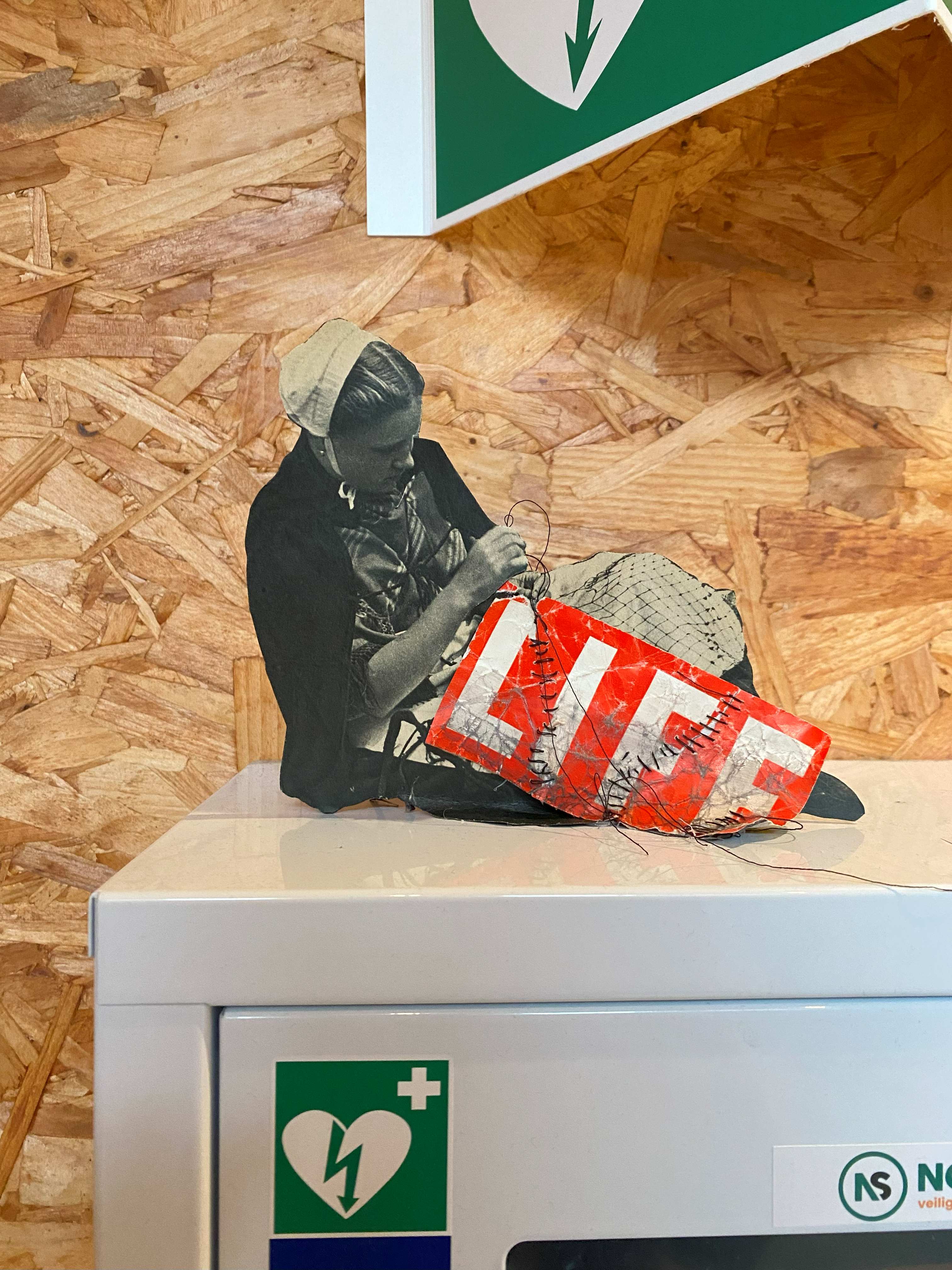
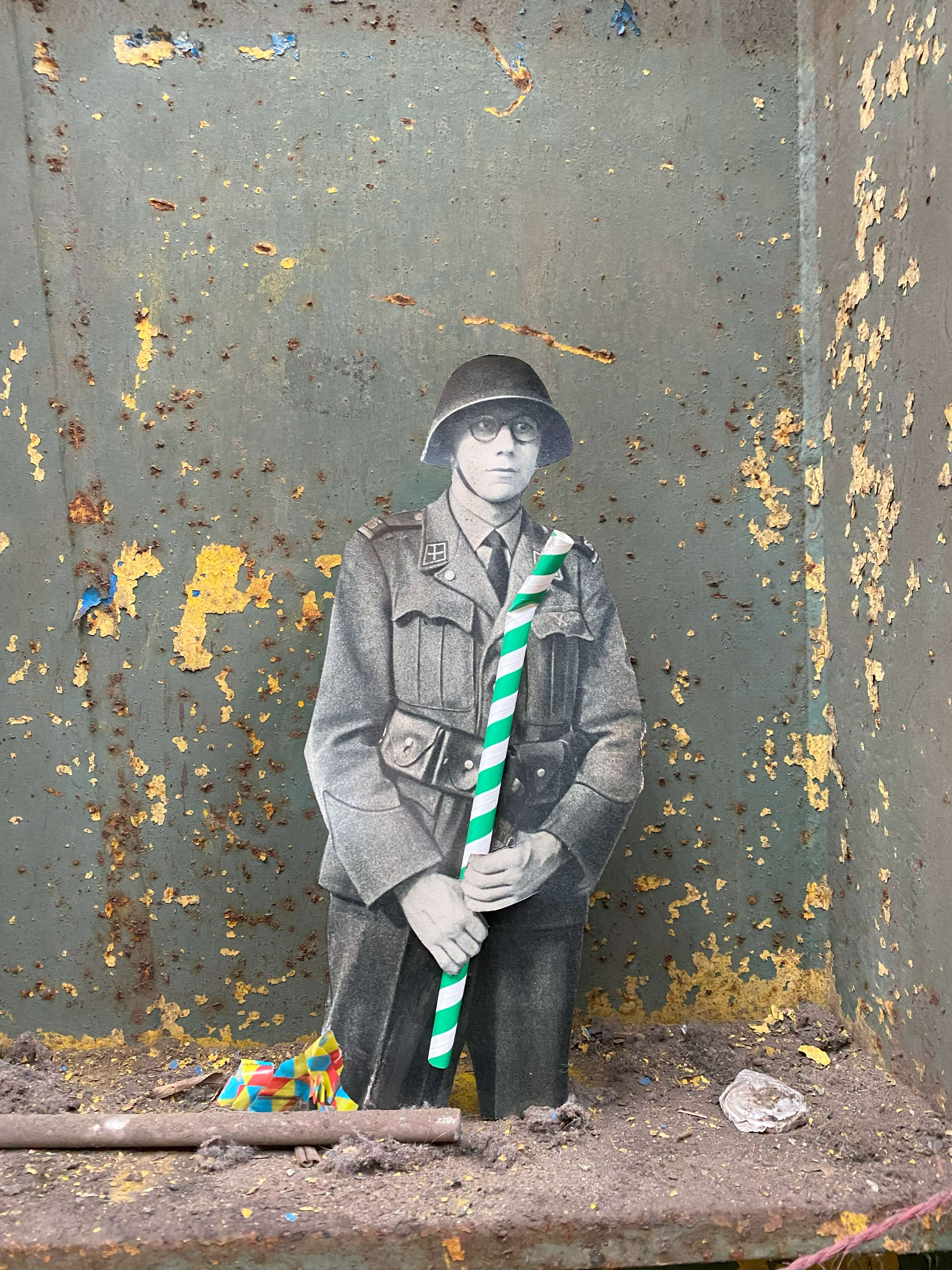
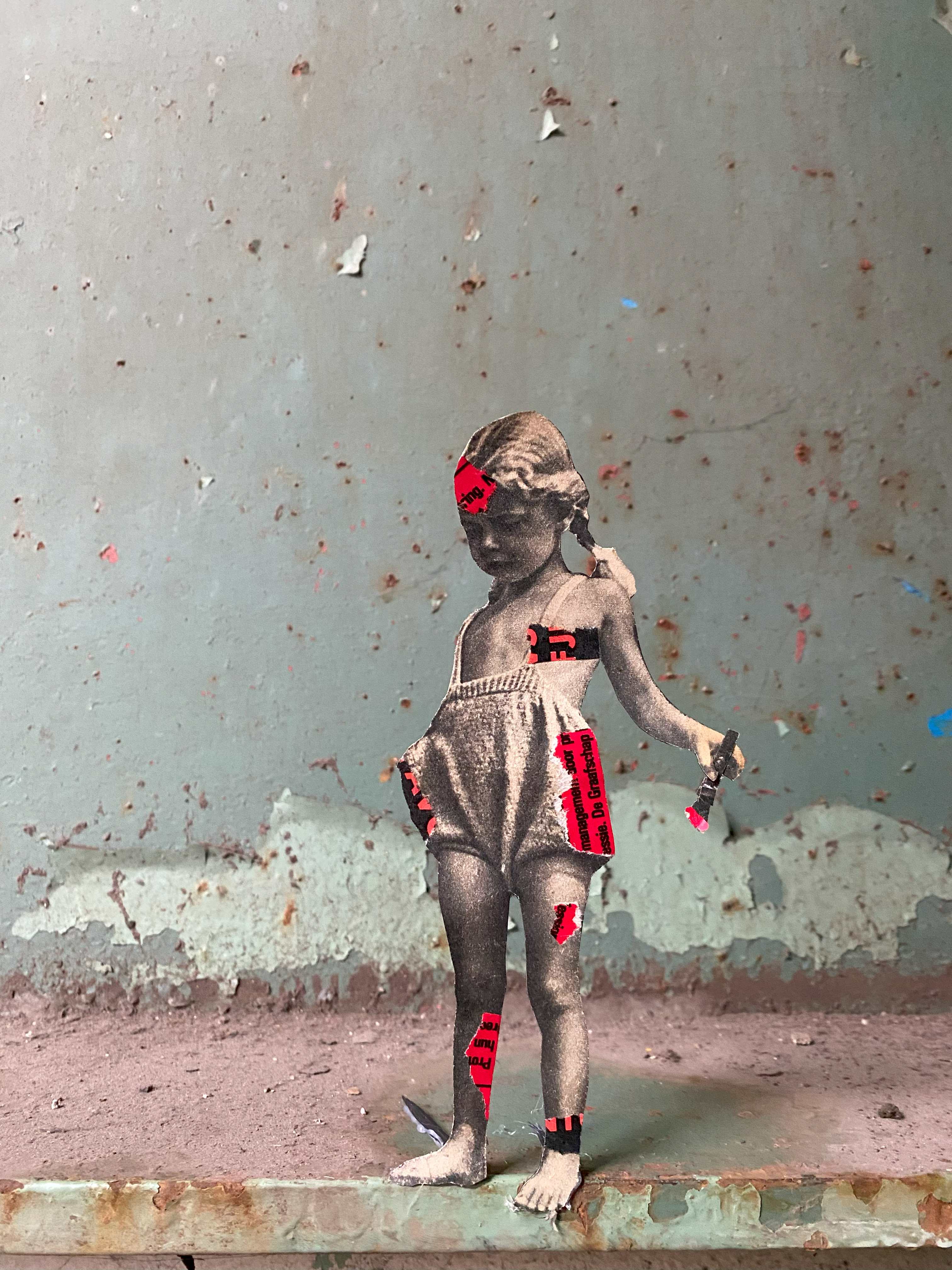
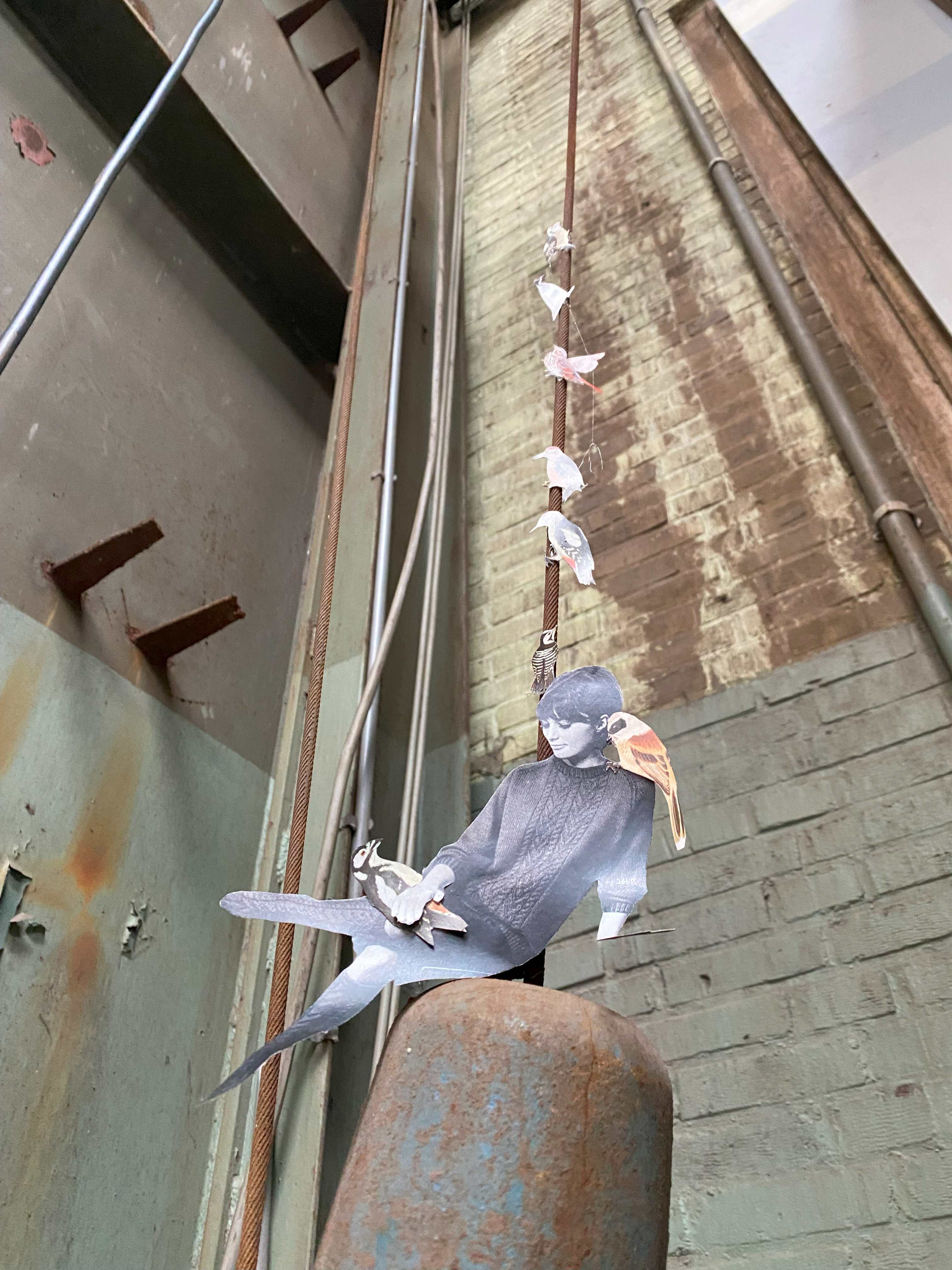
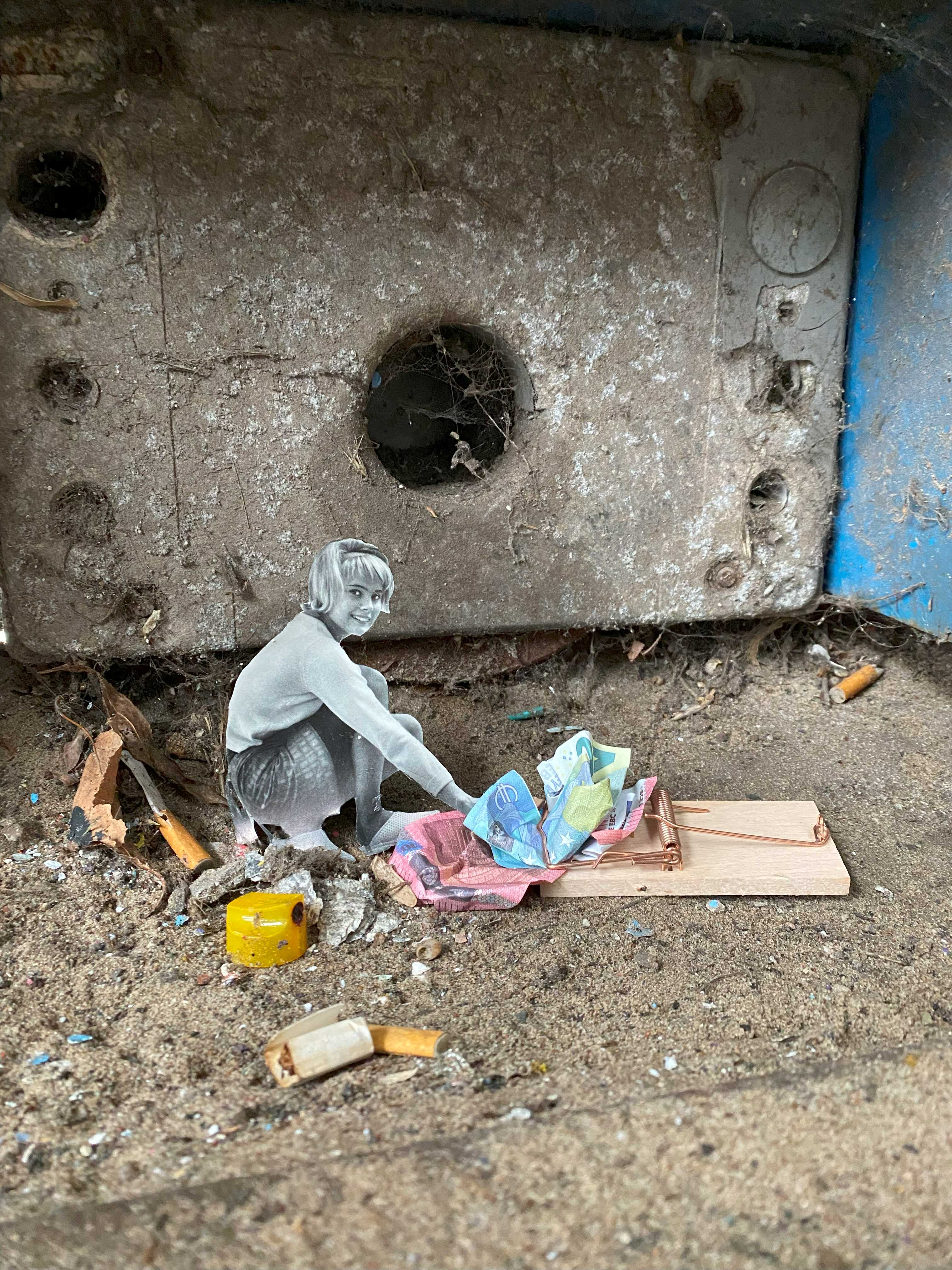
Miss.Printed is a Dutch-born, Norwegian-based artist who makes small paper collages, leaving bits of sanity for others to reflect upon. She believes in the accumulation of small gestures. The more we can engage people with our ideas, the more we can empower people to think, feel, dream, and the better the world will be.
During her stay at STRAAT, Miss.Printed searched for parts of the museum that could be added to, in order to create whole new worlds. With paper college, Miss.Printed brings to life aspects of the museum otherwise unnoticed. We hereby invite you to see how many of her creations you can find.


Miss Van

Miss Van started wall-painting at the age of 20, in 1993, and is one the driving forces behind the feminine movement in street art. She is originally from Toulouse, but spent most of her artistic life in Barcelona. She has travelled the world painting her instantly recognizable women on the streets, as well as on canvas.
In her gauzy romantic compositions, Miss Van’s muses carry a surreal quality of burlesque, resonating with a beautiful synergy of rawness, softness and emotion. She states: “I’m evolving and growing up with my paintings. It’s the only way, when you paint with emotions and feelings. I’m trying to be true with myself.”


Musa71

Musa 71 is the pseudonym of María José Cano Besa. She is one of the first graffiti writers in Spain, and arguably the most relevant writer of her generation. Musa started painting in Barcelona in 1989 and is still active in the streets. She also works on different projects for which she brings her characteristic style to galleries, festivals, and cinema.
“The letter, the language, is one of the fundamental tools of expression and communication for human beings. Through them, we define, understand and share knowledge, experiences, fears and doubts. With words, with letters we can express ourselves beyond time and space. Letters organize thought, define our reality and allow us to create imaginary worlds. The superimpositions in which I work are a reflection of this intention. Through these four letters and their colors I define landscapes, moods, desires and demons, creating a bridge from personal experience to reach the other side, the side of the observer.” / Musa 71

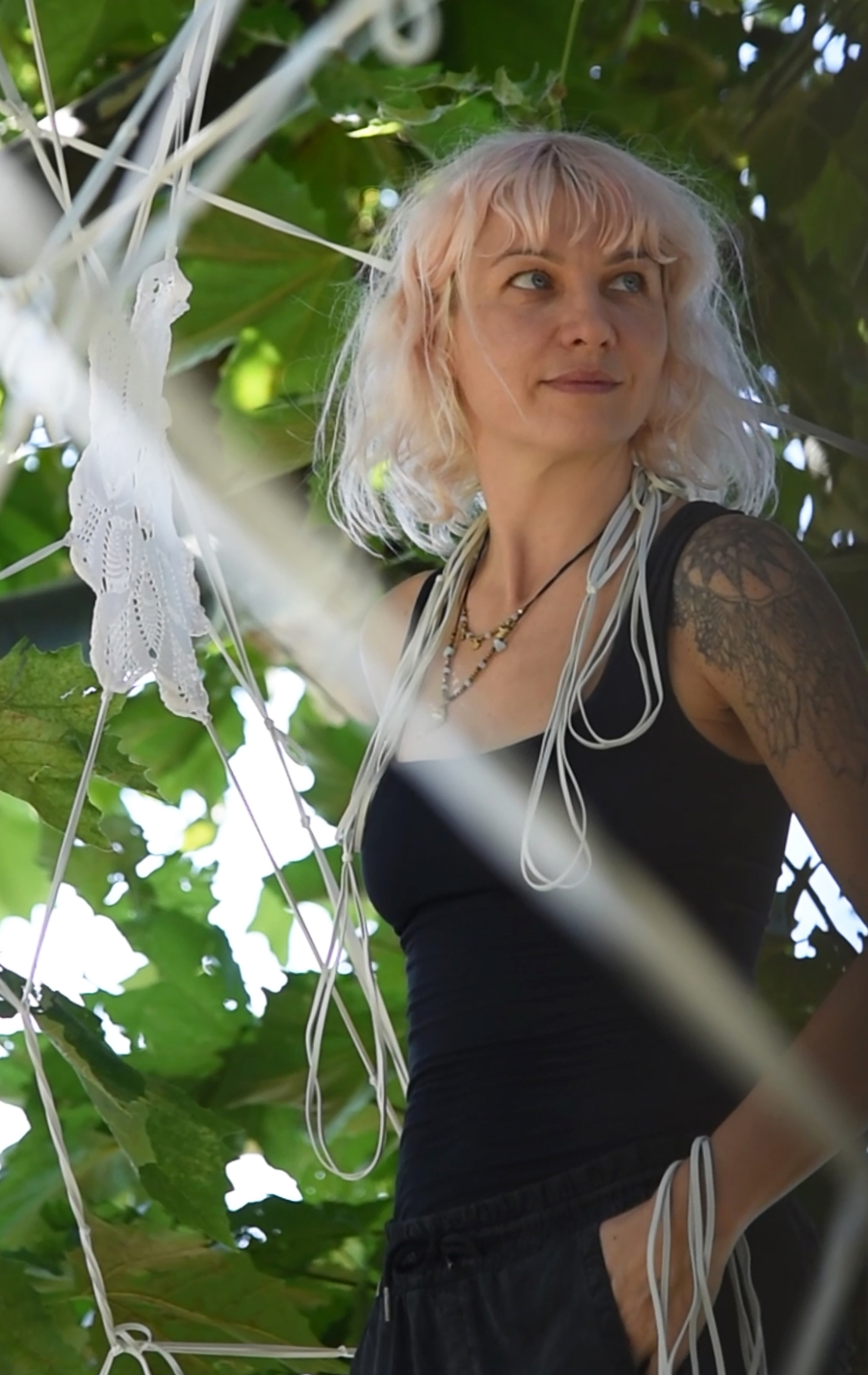
Nespoon

Polish artist NeSpoon can be considered a street artist, but she also works with ceramics, sculpture and traditional paint. In 2009, lace became her signature. Through her work, she often comments on social issues she deems important.
NeSpoon discovered lace when she started working with ceramics. Lace patterns are a popular way to decorate tableware. By pushing lace into the fresh clay, patterns are formed. NeSpoon realized that these patterns could exist as an independent art form.
In the streets, she often adds a certain softness to raw cityscapes. She always does this with respect for the location and local surroundings. She also loves looking into local textile traditions. By choosing an artform strongly linked to women, she celebrates femininity and harmony.
"My installations can be also perceived as a symbol of connections between people and cultures. Intertwining threads with real laces are an excellent metaphor for a map of social relations." / NeSpoon

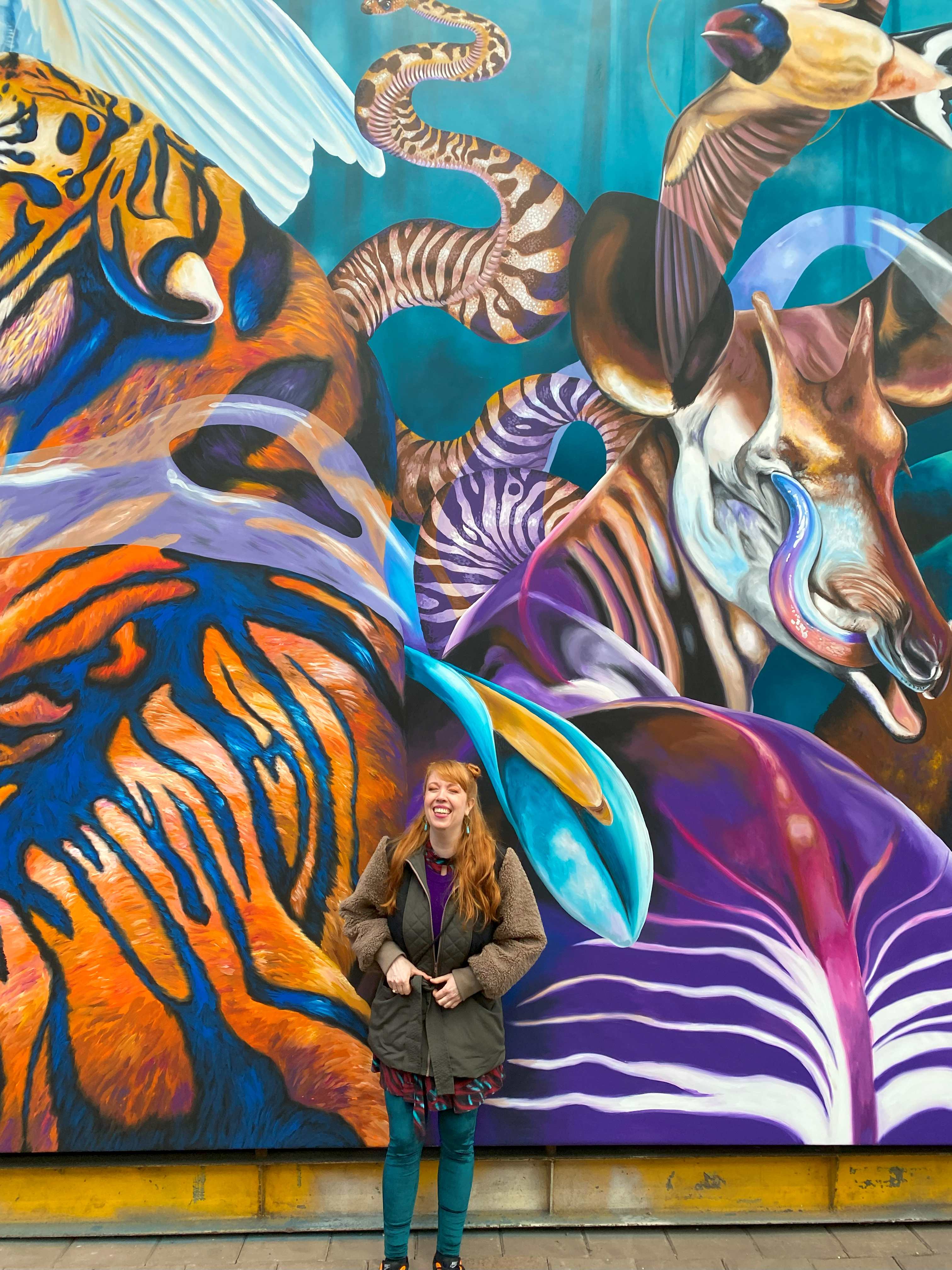
Nina Valkhoff
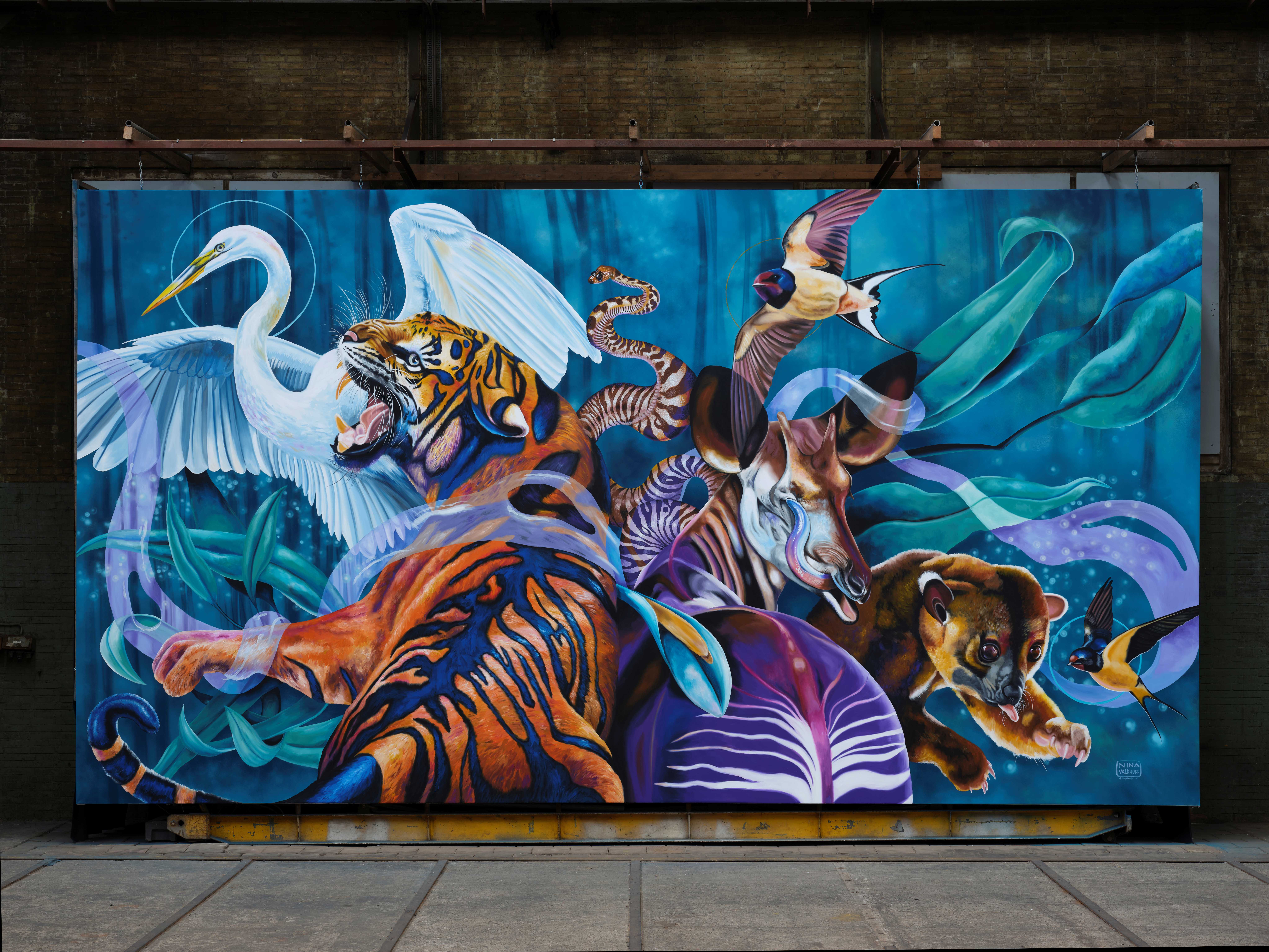
.JPG)
Nina Valkhoff is an illustrator and muralist from Rotterdam, the Netherlands. Making big mural paintings is her passion. She loves to cover her walls with plants and animals, especially with endangered species, in order to make people aware of their existence, to show the beauty of these animals and to point out our selective love for themore domesticatedanimals.“This is a cry for attention for endangered species, something that frequently returns in my work. In STRAAT, I could really take more time than I would normally do on outside walls, so relatively speaking there are a lot of protagonists in this artwork. I wanted to make some sort of Dutch Golden Age composition, but with animals. I also felt the freedom to go a bit more wild than I would normally do, which is why there is, amongst other things, an okapi licking its own eye.” / Nina Valkhoff


Paola Delfin

Women are undoubtedly Paola's favorite subject. This artwork is part of a series that focuses on the connection between mind and body, but also between humans and nature.
“Motion in life happens every day, from every human’s birth to their death. We are never the same, we keep moving and evolving.” / Paola Delfin


Satr




Satr’s original technique of using spray paint atomization to create unique contours and shapes gives the animals in her paintings a dynamic edge and smoky feel. She experiments with and widely researches the use of transparent graffiti spray paint. The integration of traditional Chinese culture and art making processes are the basis of Satr’s work, further emphasized by her use of an ancient seal-engraved signature.
“This piece highlights the endangered plight of whale sharks, whose survival is increasingly at risk due to human activity. In the artwork, three whale sharks appear, though only one is fully present. The other two, shown as faint silhouettes, represent the spirits of lost companions, reflecting the dwindling numbers of this remarkable species. The title, Starlit, is inspired by the star-like patterns on the whale shark’s back, reminiscent of stars in the night sky. In the upper right corner, a red crystal glows, as if guiding them toward an inevitable fate.” / Satr


Shamsia Hassani

Shamsia Hassani is one of the first female street artists in Afghanistan. A lot of her artworks discuss the position of women. Here, she tells the story of people who had to pack for a sudden evacuation, as war and instability took home and peace away from them.“We just packed everything that came with a memory. How can you fit your entire life into one bag? This suitcase is what we took to exile and what we will carry around for the rest of our lives.” / Shamsia Hassani


Spoko Loco
Spoko Loco was born in Poland but moved to the Netherlands at age 12. Now operating out of Amsterdam, she still cites her Polish roots as a big part of who she is. Influenced by her international upbringing, Spoko loves to travel. Traveling, adventure, meeting new people, and painting together are major inspirations for her.
Spoko Loco’s body of work consists of bold and vibrant murals featuring curvy, colorful unicorns. Through her playful imagery, she celebrates all body types and encourages self-acceptance. Her work is a joyful reminder that everyone is unique. As she puts it: “Each mural is an expression of being true to who you are.”


Studio Zepa

Kaleidoscope represents Studio ZEPA’s journey as artists. It places emphasis on the character’s glasses, staring purposefully ahead to a colorful bright future, capturing some of today’s urban style and demeanor.
Artist duo Studio ZEPA (Page33 and Zesta) creates harmoniously colorful art. In their murals and post-graffiti works, they find the perfect balance between abstract and realism. They have a recognisable and distinguishable style, using illustrative linework and fauvistic color application. They often explore a general theme of globality, touching topics of tolerance, equality and inclusiveness. Nature features as an element that connects all humans across each continent and all cultural differences.


Swoon
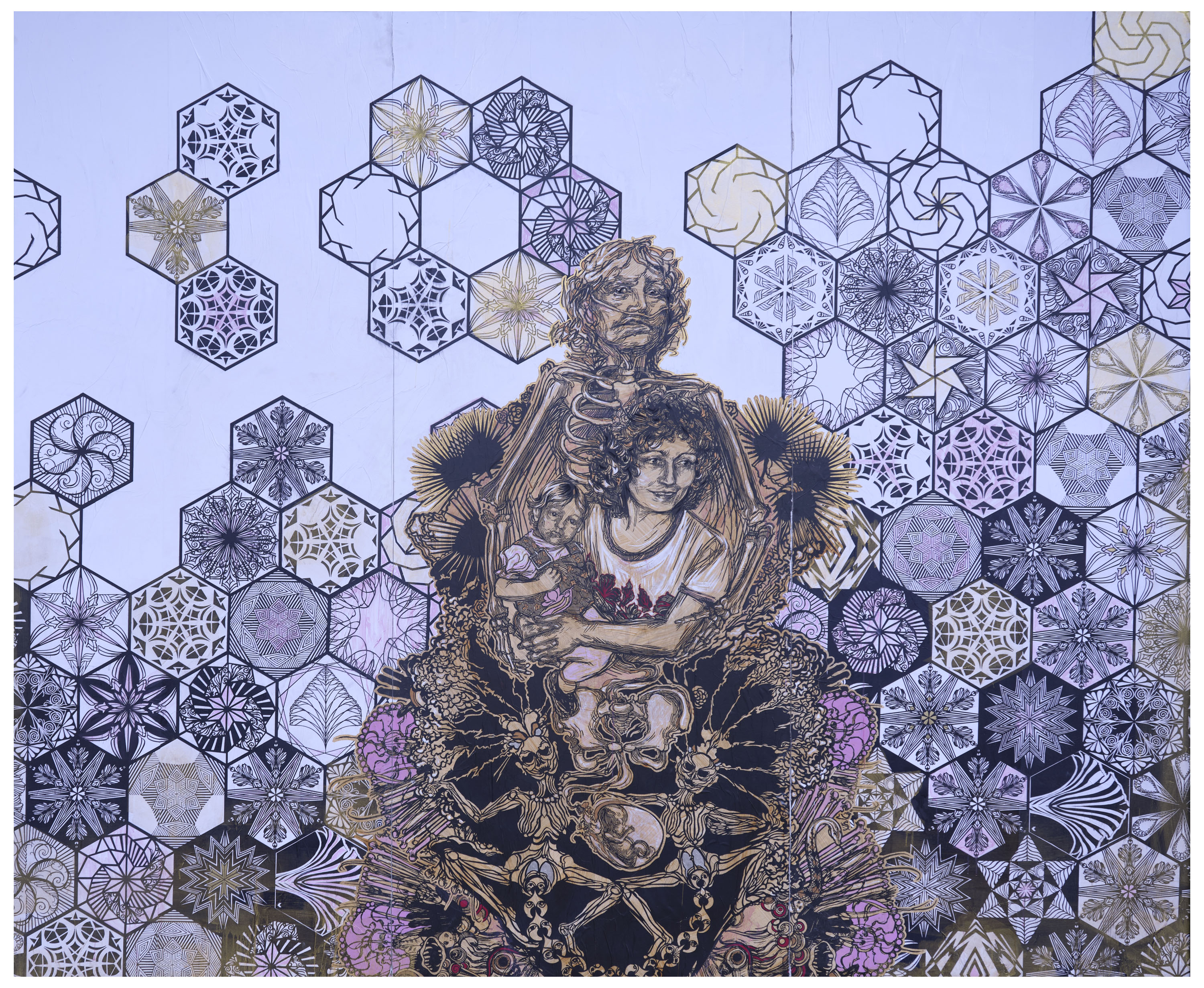
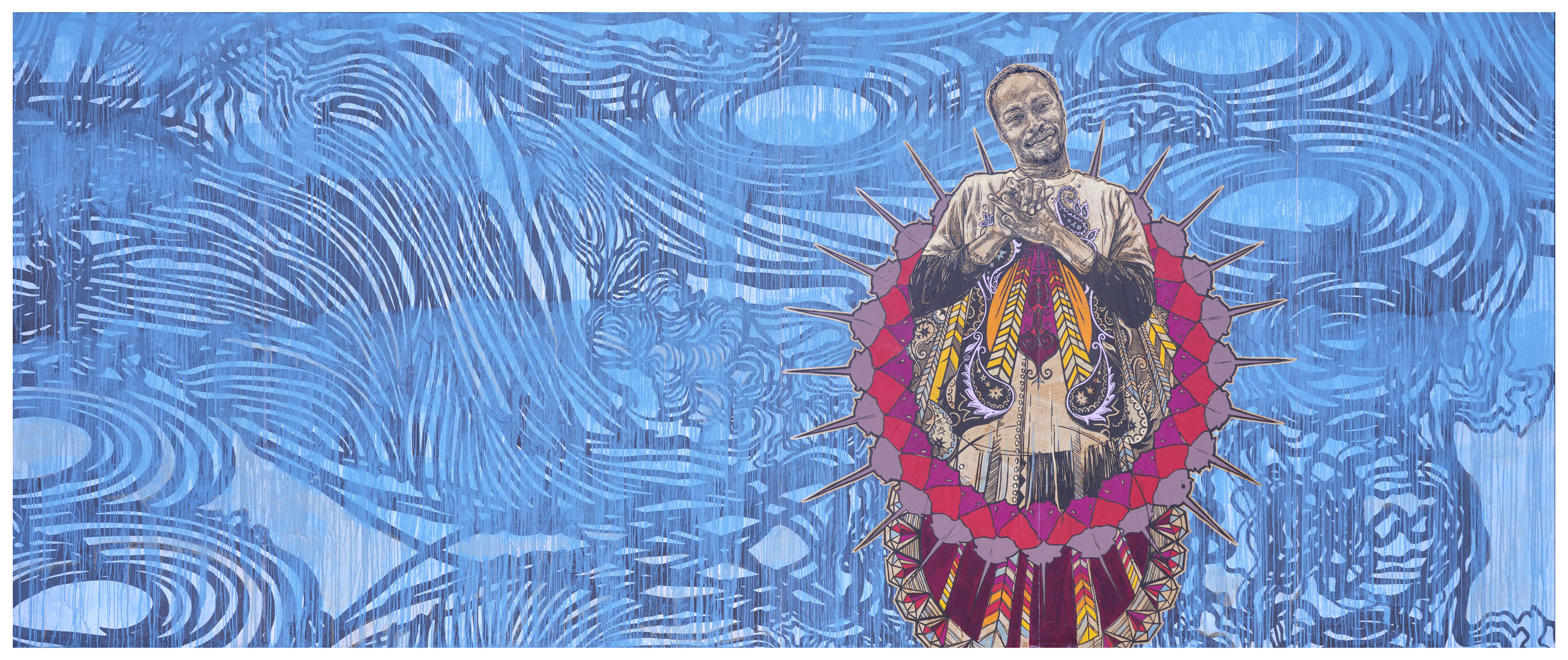
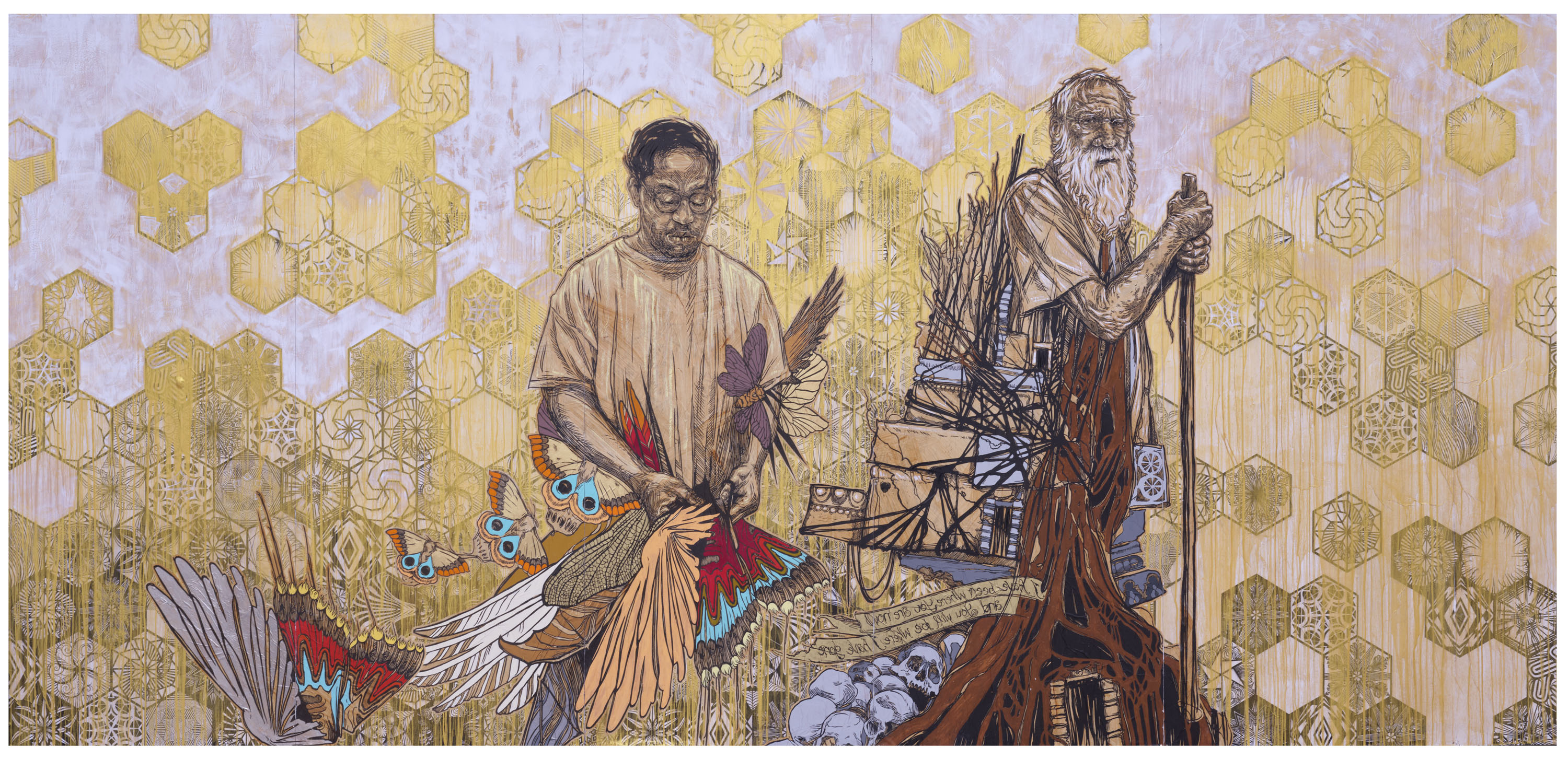


A leader in the street art movement, Caledonia Curry, aka Swoon, is best known for her stylized portraiture of marginalized individuals. As an avid traveler, Swoon dignifies those left behind or struggling in a globalized landscape through intimate portraits. Her work emerges from intense immersive experiences and dialogue within diverse communities.
Swoon approaches her work with compassion and understanding to develop interactions that allow both art and community to thrive. Through storytelling and public murals as a means to address the cyclical nature of unhealed trauma and addiction, Swoon’s explorations blossom into artworks rooted in research and collaboration with those affected.
Swoon presents a series of pasted paper portraits of Yaya, George, Sonia, as well as her own mother and father, all of whom struggled with addiction.
The use of wheat-paste as a choice of material and technique reflects on Swoon’s interest in architecture and ephemerality; differently from a painted mural, the paste-up has a life cycle of its own and is an ongoing event in itself: the color fades gradually and the paper slowly wrinkles and deteriorates; this is all part of Swoon’s concept and relates to the subjects she is addressing.
These works were part of the Urban(R)Evolution exhibition by Underdogs in Lisbon in 2023. In 2024, the collection was acquired by STRAAT Museum, made possible in part by ABN AMRO, the museum’s social partner. The works are part of the Women in Street Art campaign, which aims to promote more equal opportunities within the art world.


Wasted Rita



Wasted Rita’s work usually consists of messages - super direct straightforward messages that leave room for personal interpretations. Her work is inspired by her roots in punk culture, her favorite comedians and daily (online) life. She paints as she considers herself too awkward for therapy.
“For STRAAT, I really wanted to be visually coherent with the rest of the work and not create a space that kills the mood for the visitors. My answer is ironic.” / Wasted Rita

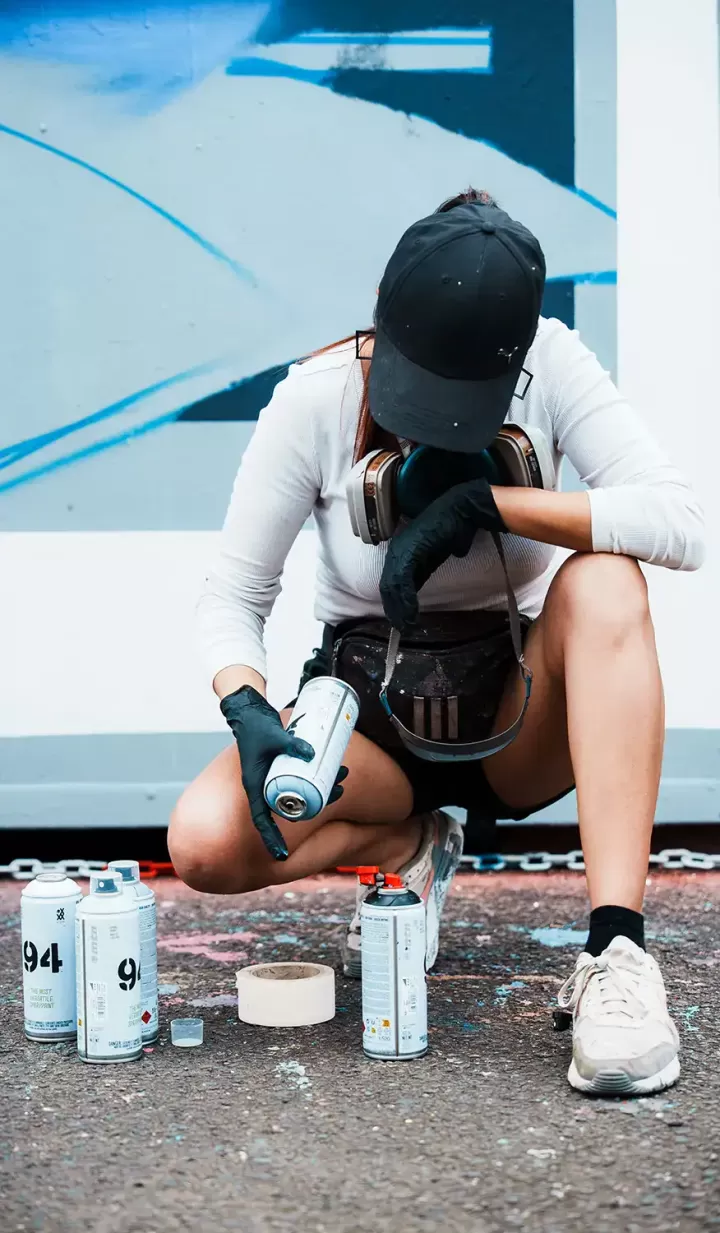
Zurik 1

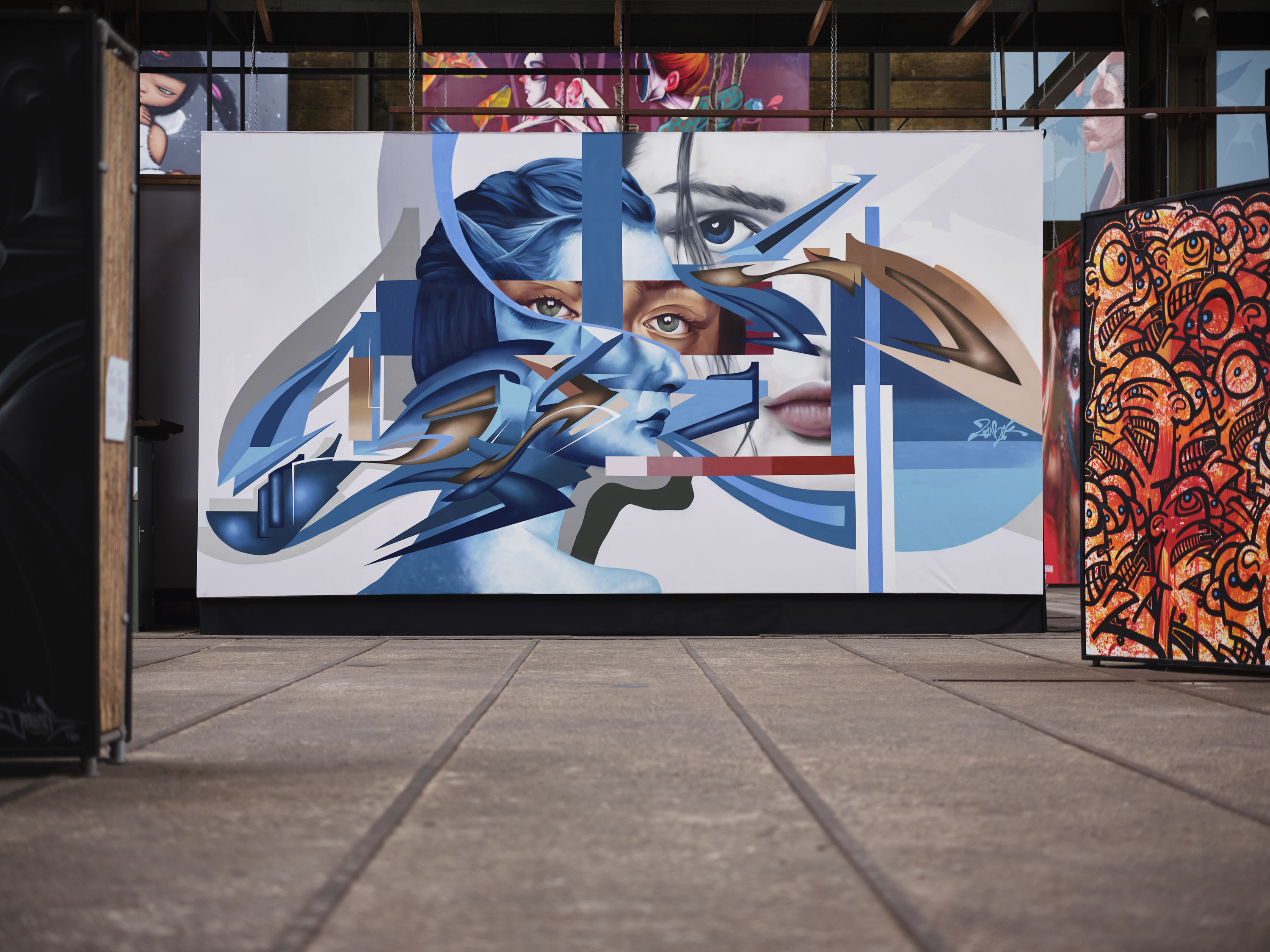
Zurik’s style is based on geometric shapes, color combinations and strong highlights. She describes it as close to wildstyle but without connections, and mostly without 3D outlines. Her style is characterised by layers and working on each letter individually, while keeping proportions and balance in the entire piece.
“I used to like the ‘virtual’ conversations a lot, and I had to, because I have been separated from family and friends my whole life since I started painting, travelling and moving. But in this moment, and more after the huge lockdown, I need to interact with them face to face to feel close to them, and I realized how important it is to ‘look into the eyes’.” / Zurik
“Given the complex past history surrounding women in art, the legacies of which continue to permeate images and the role women play in them today, it is very fitting for a street art museum, through a project like Women in Street Art, to draw additional attention to the women in our museum, and at all to the role of women within the history of street art.”

.avif)
